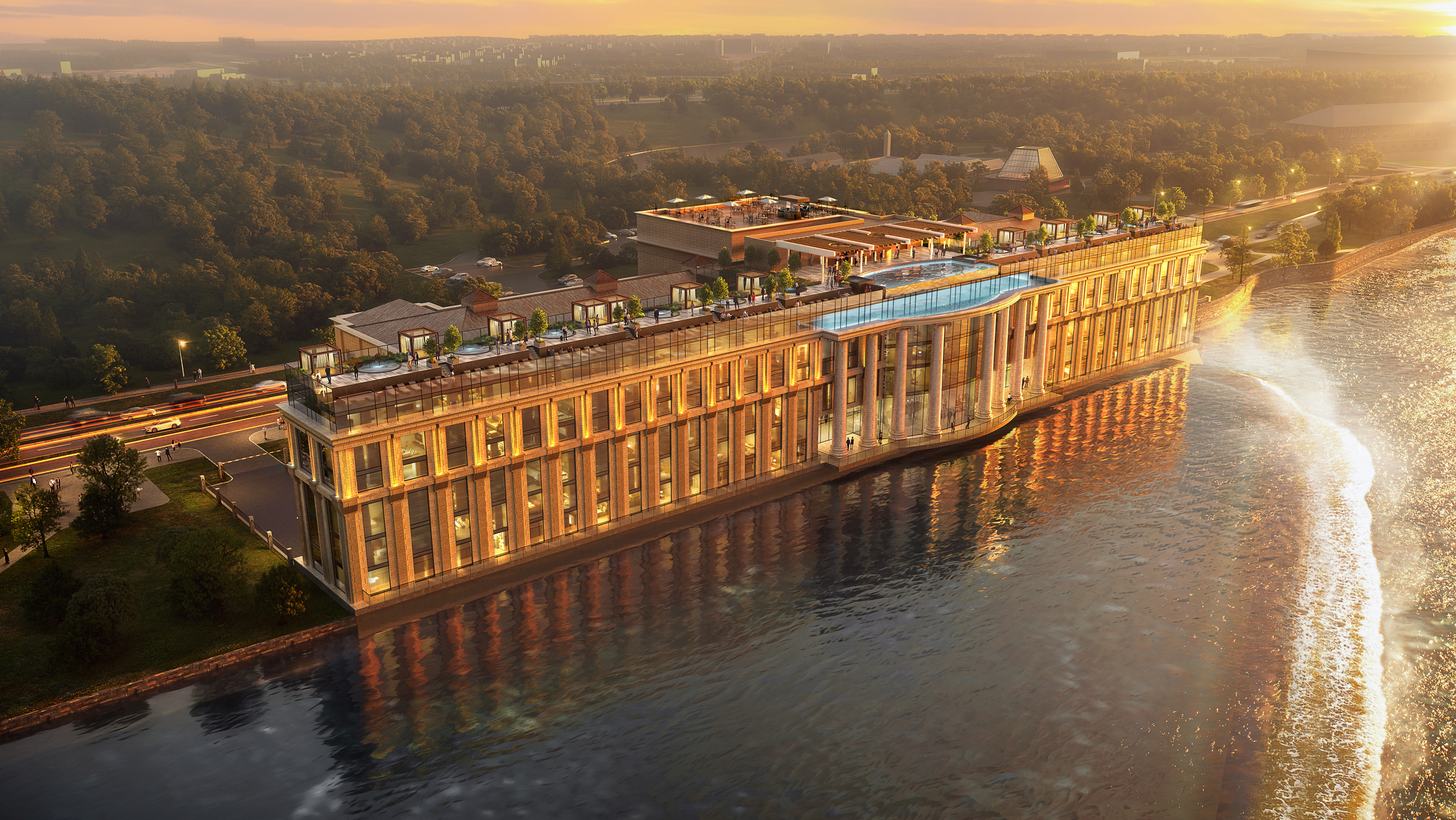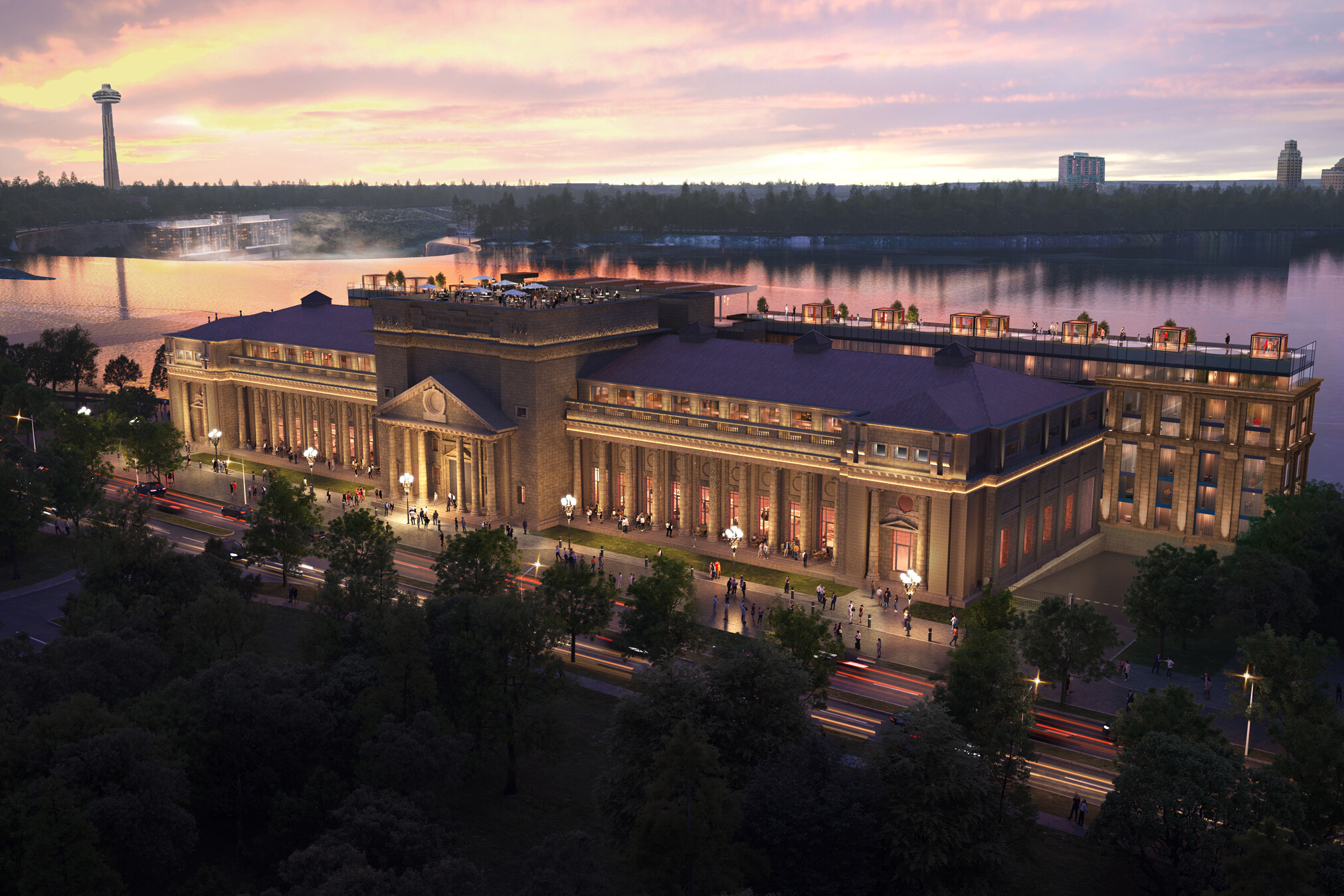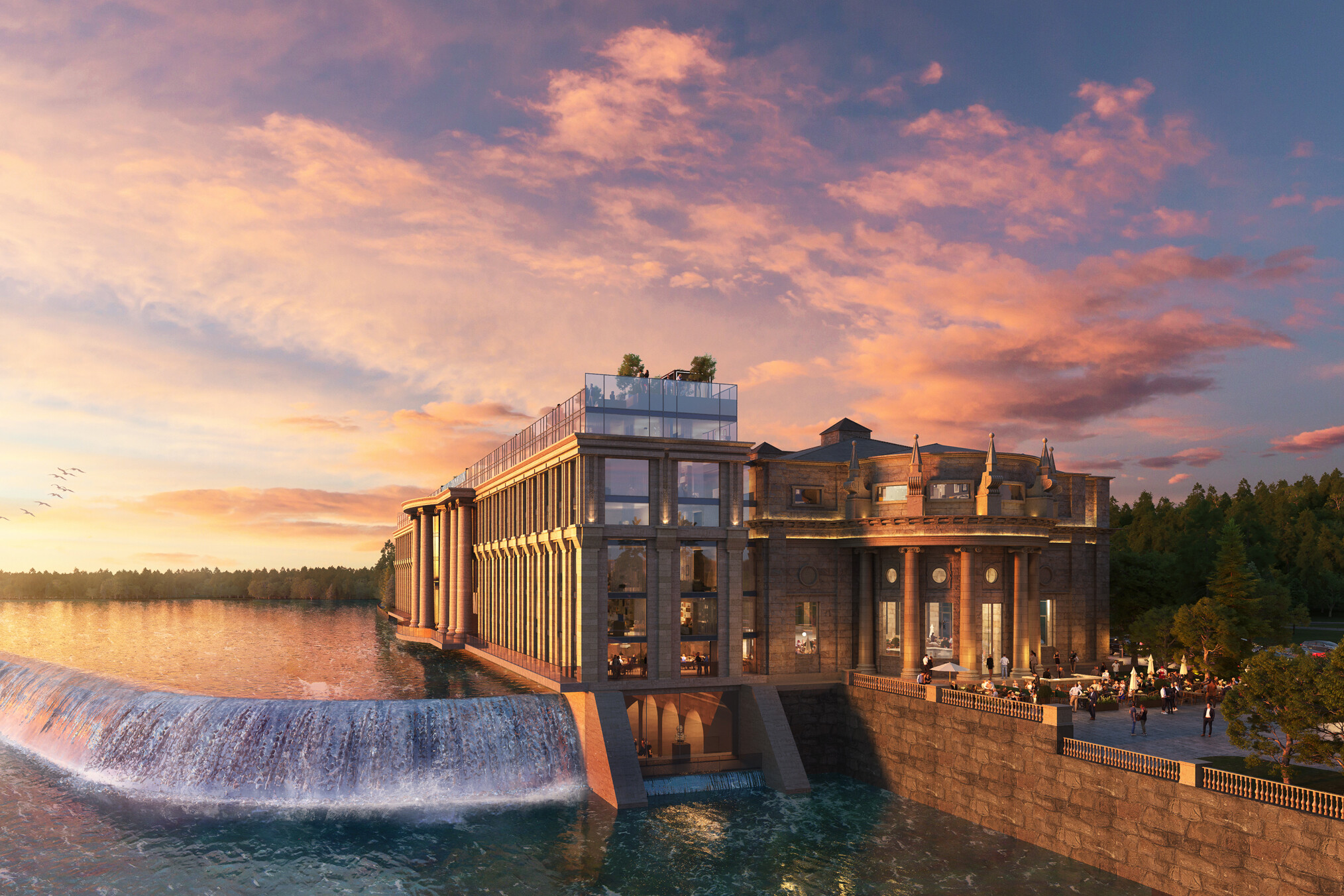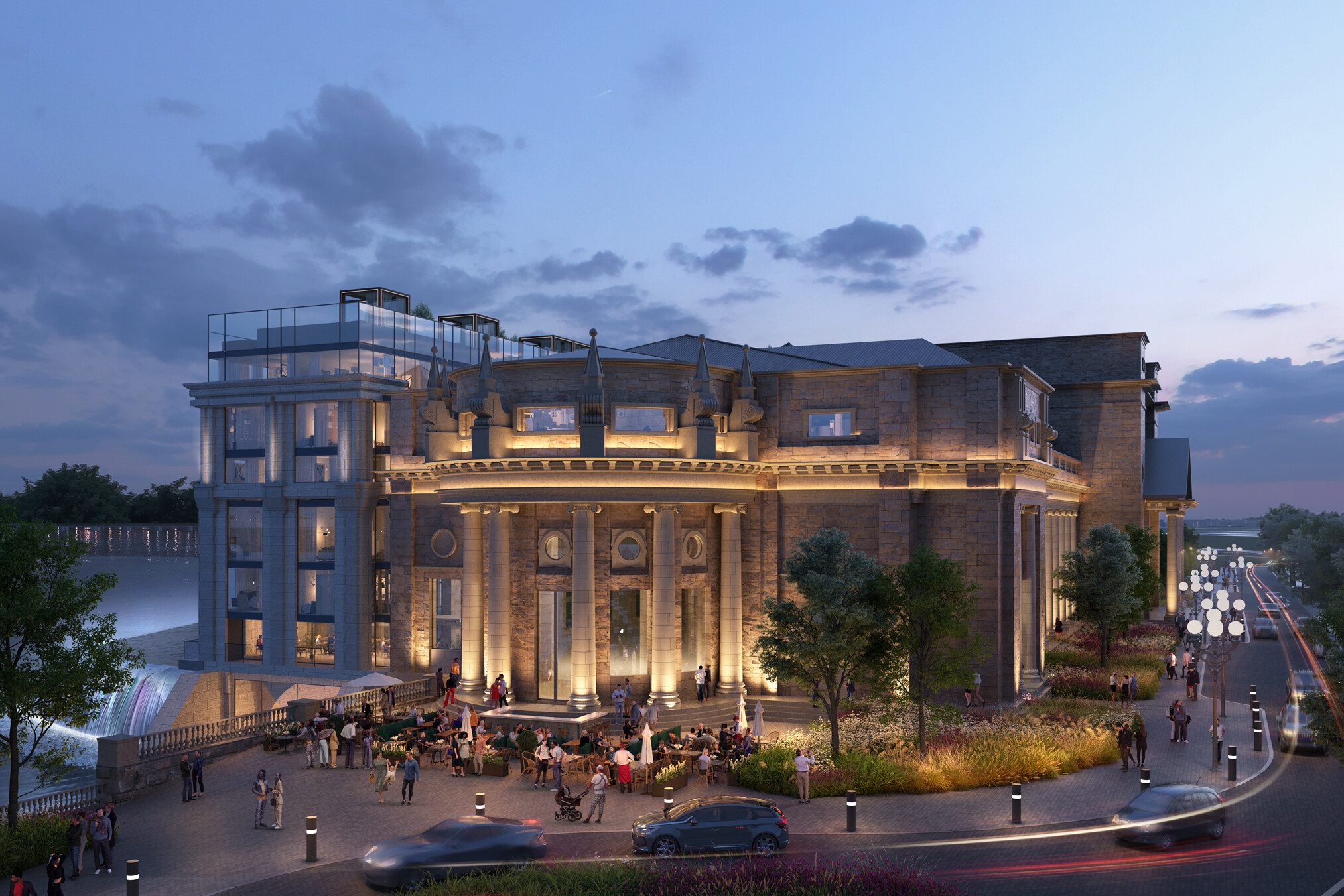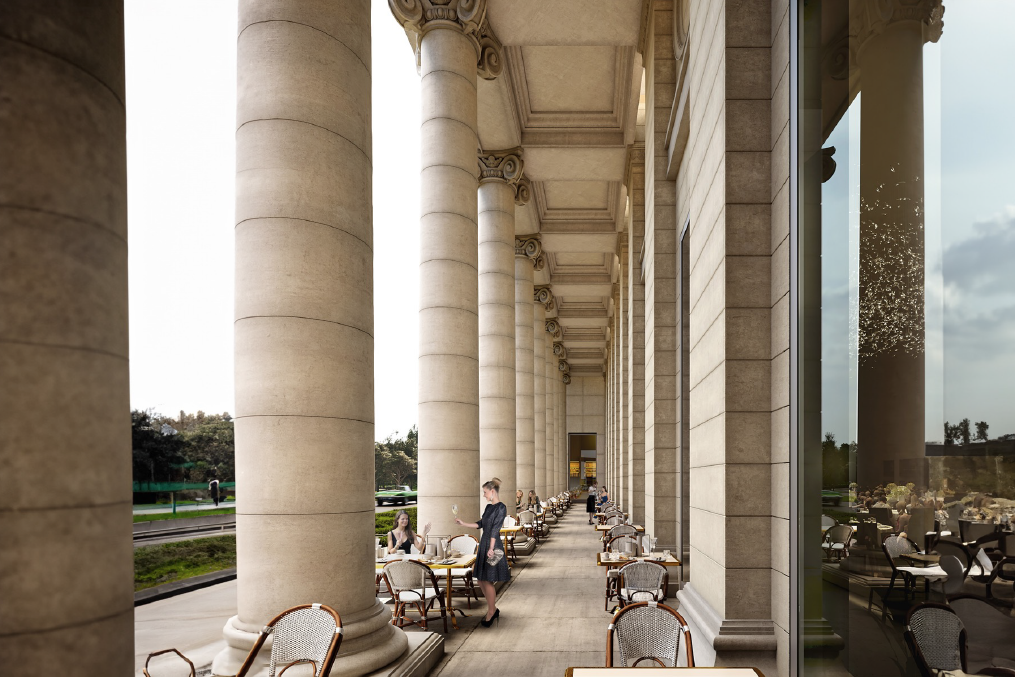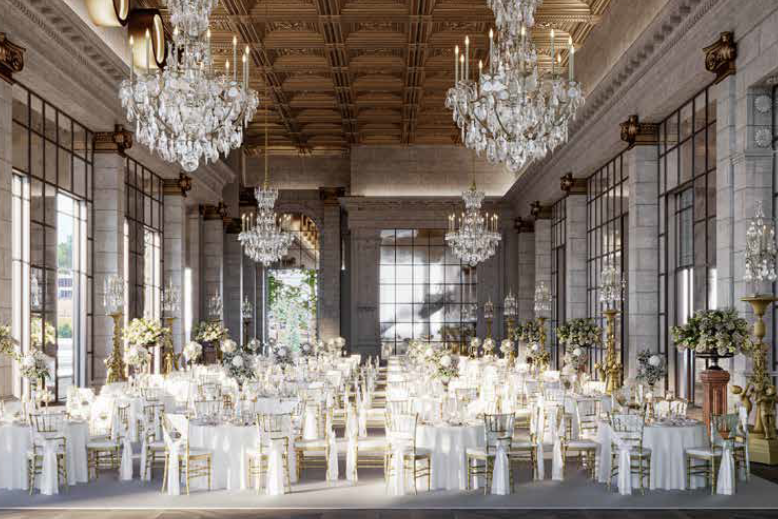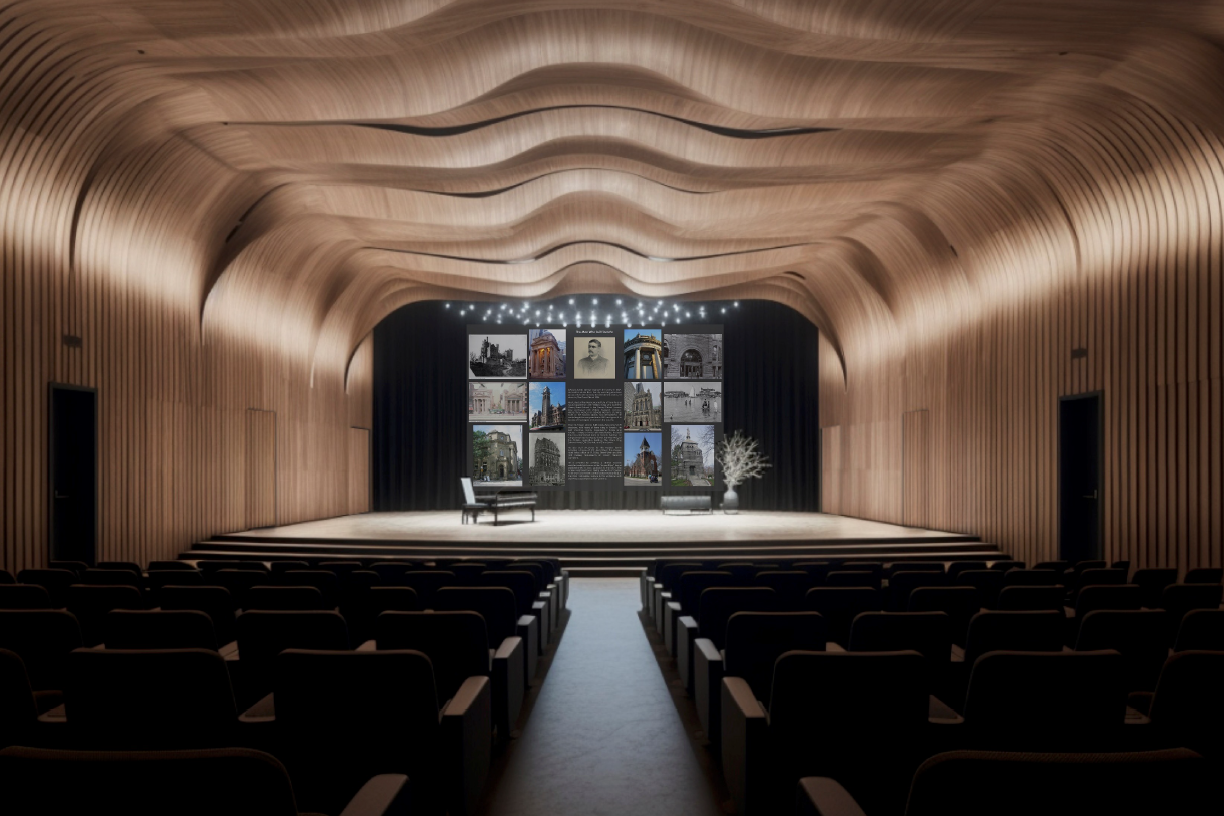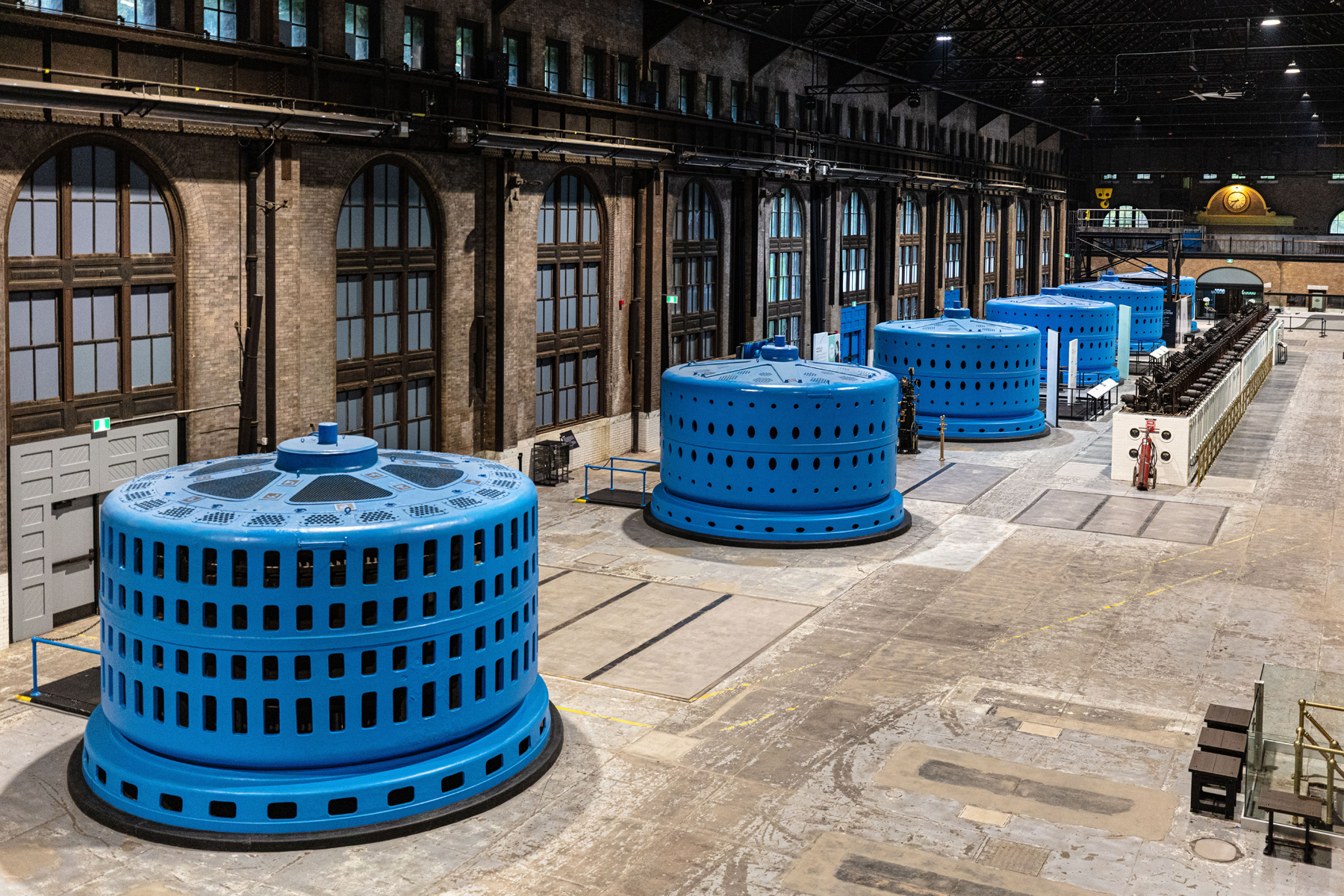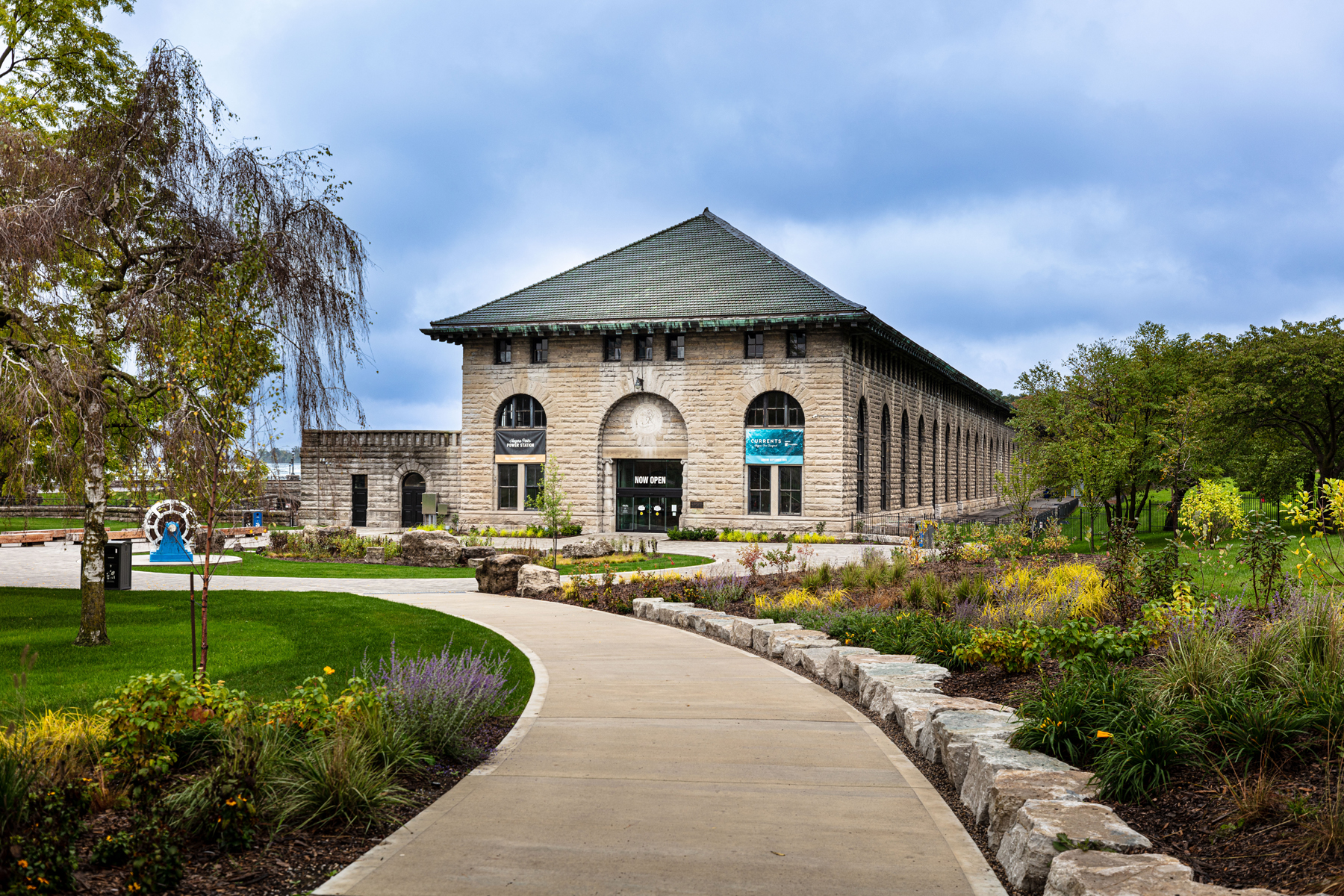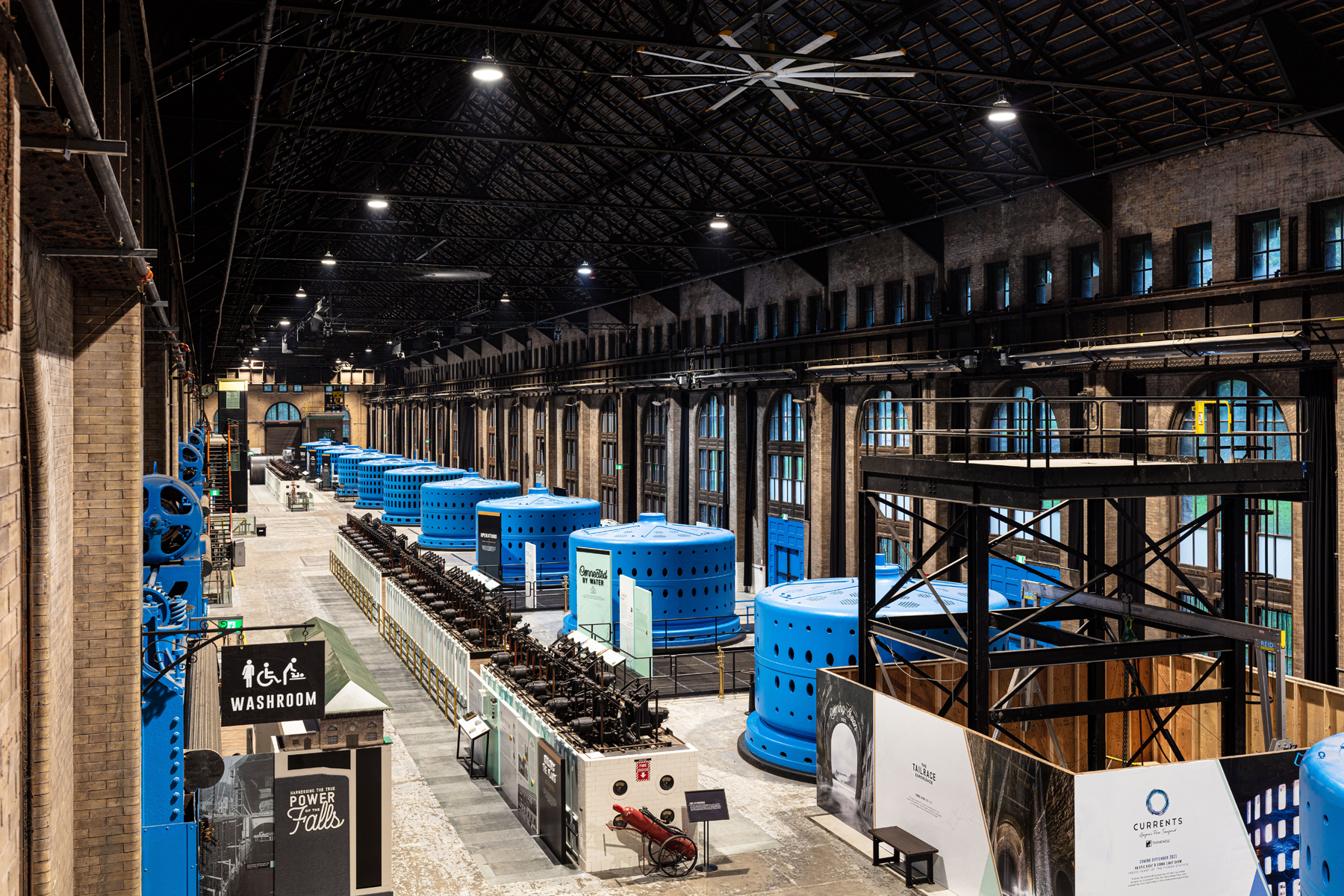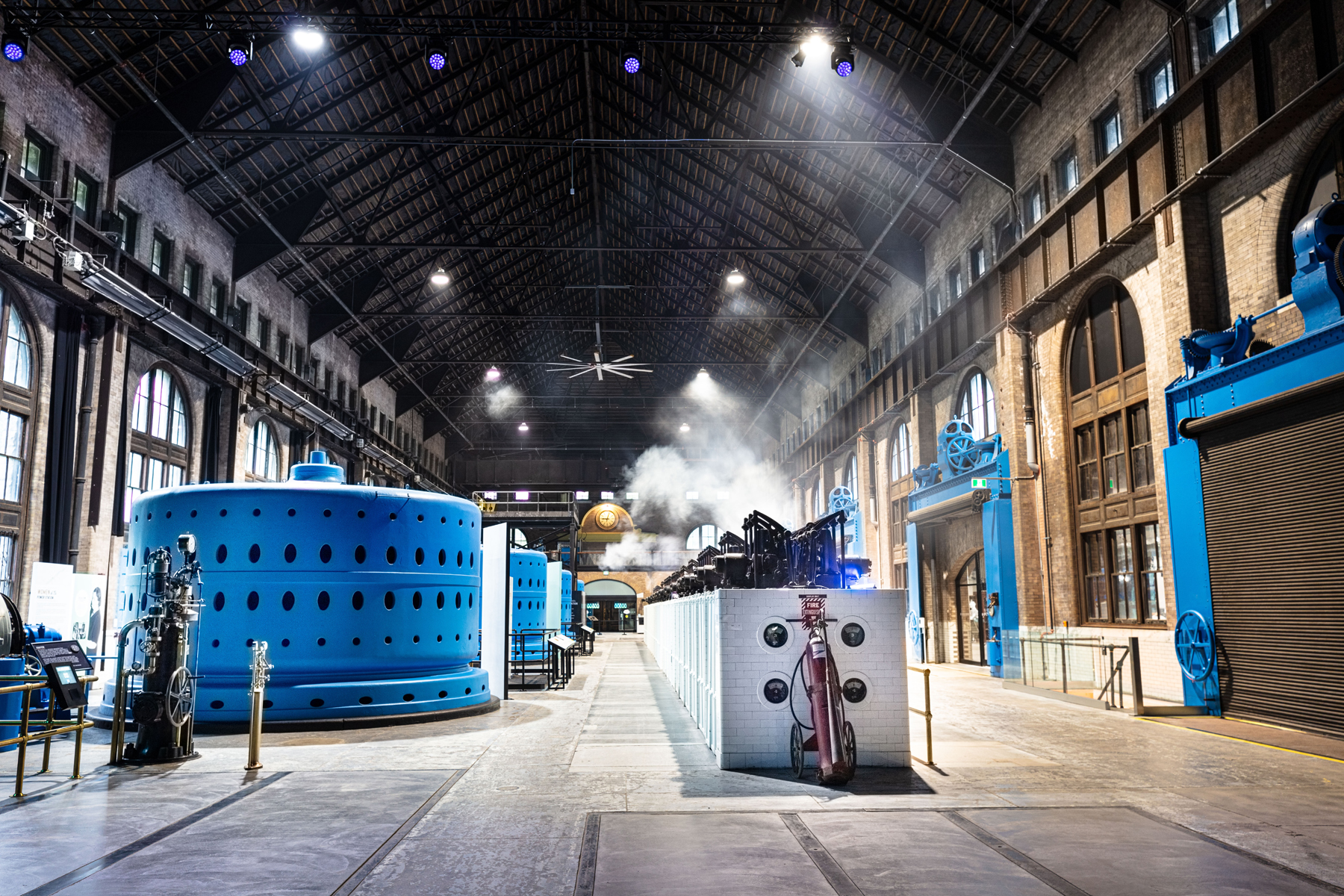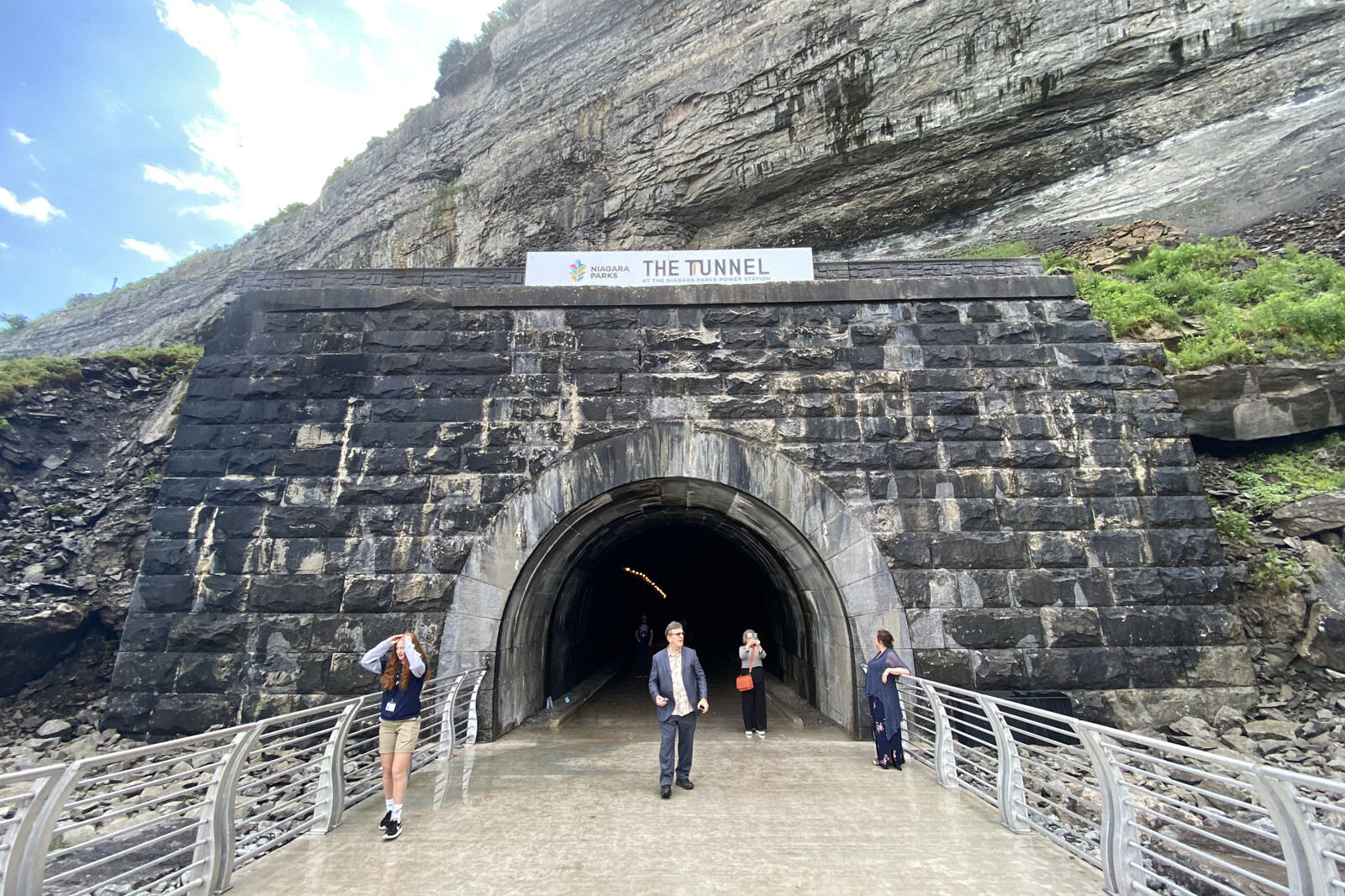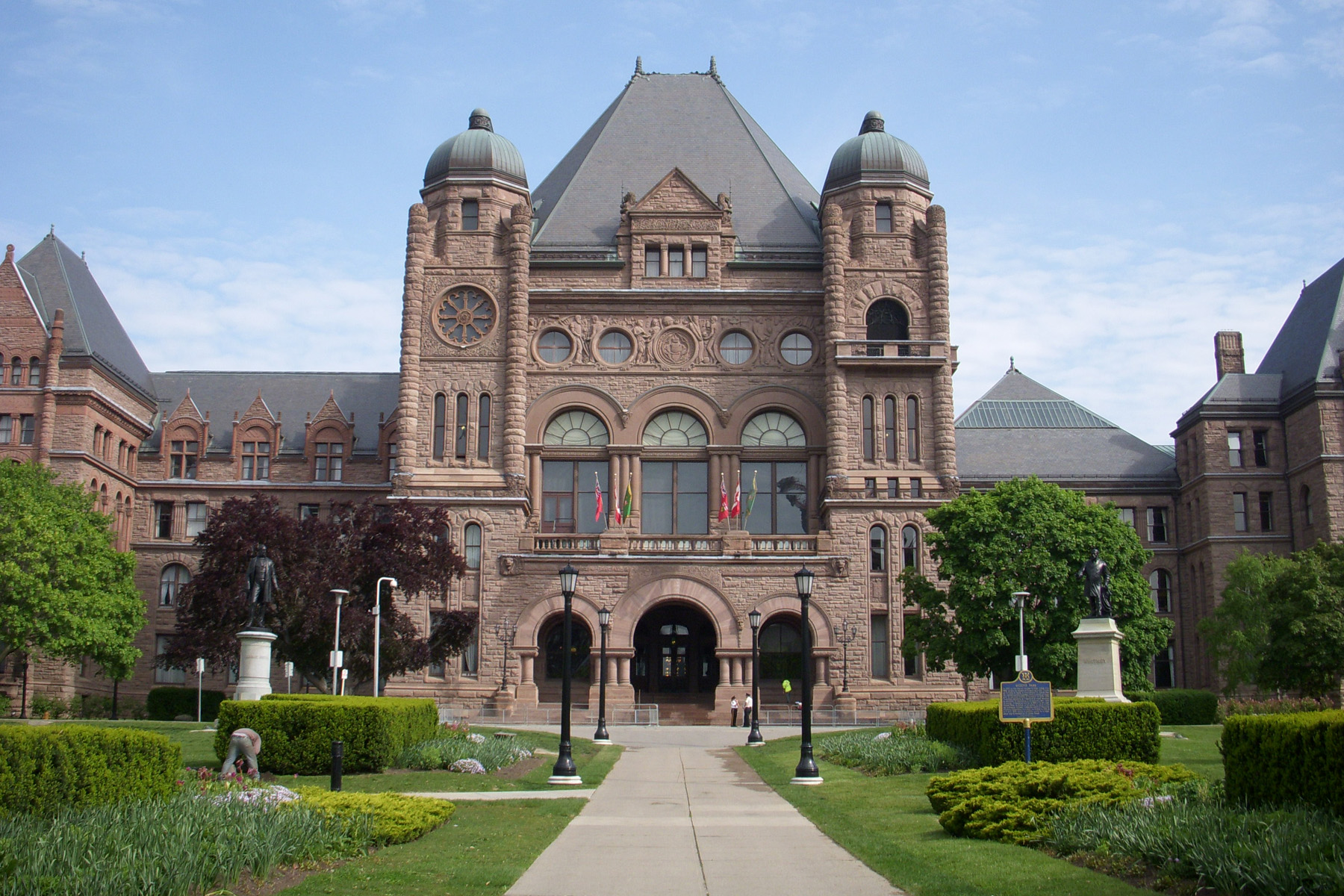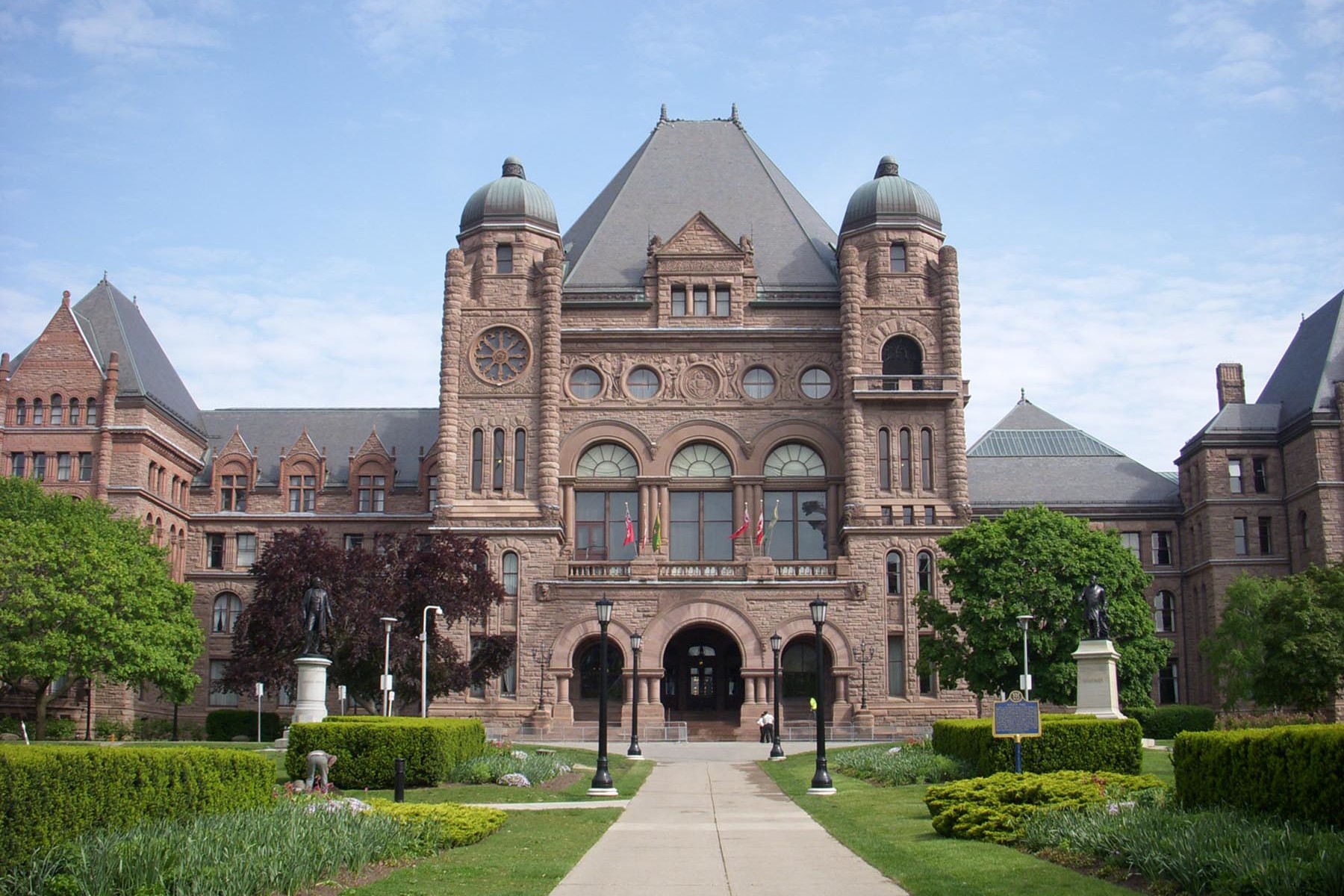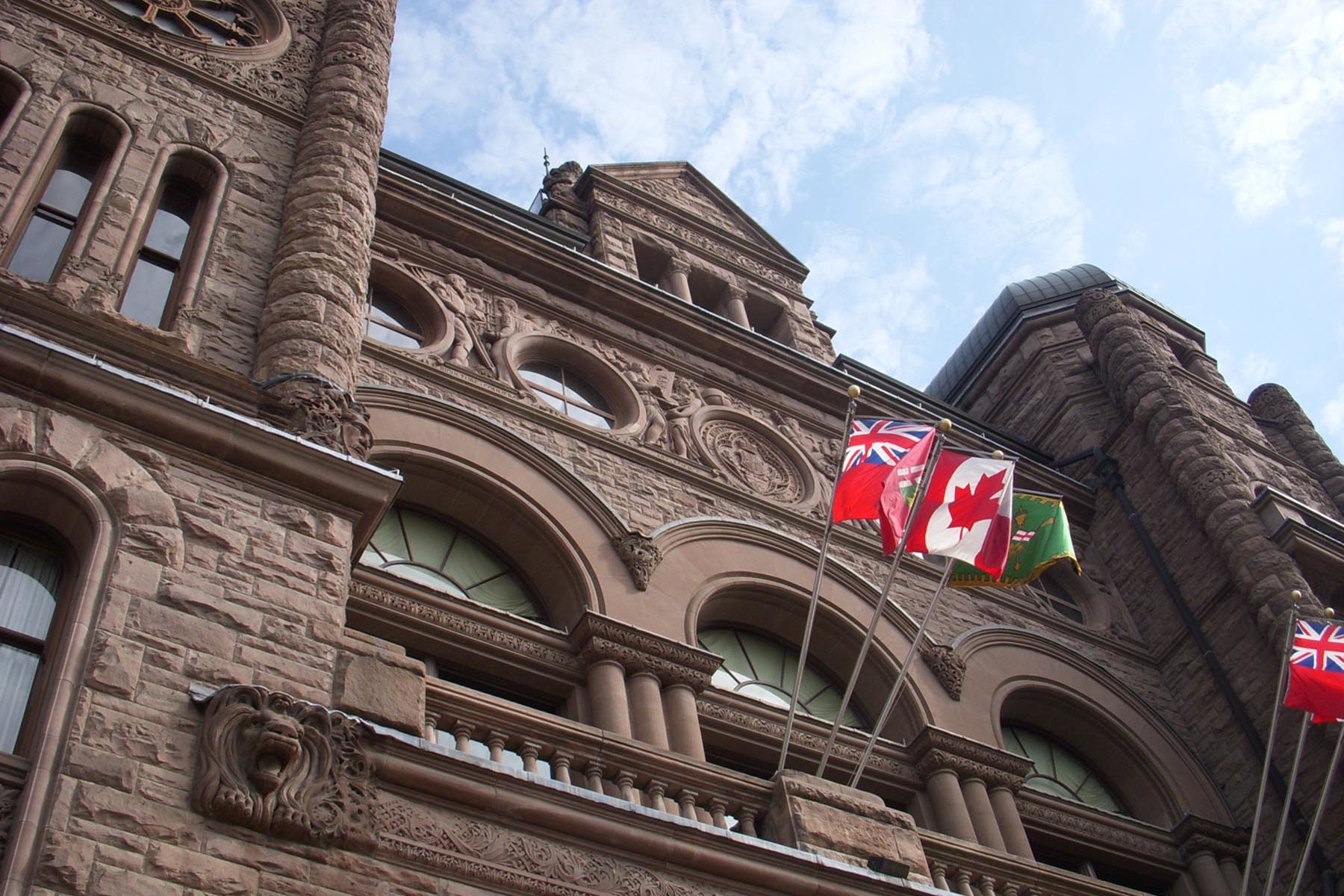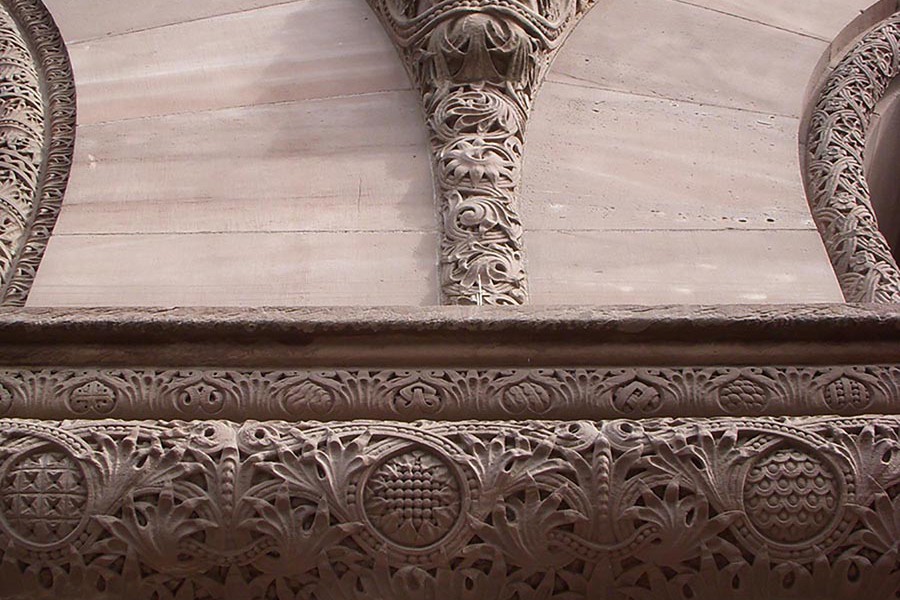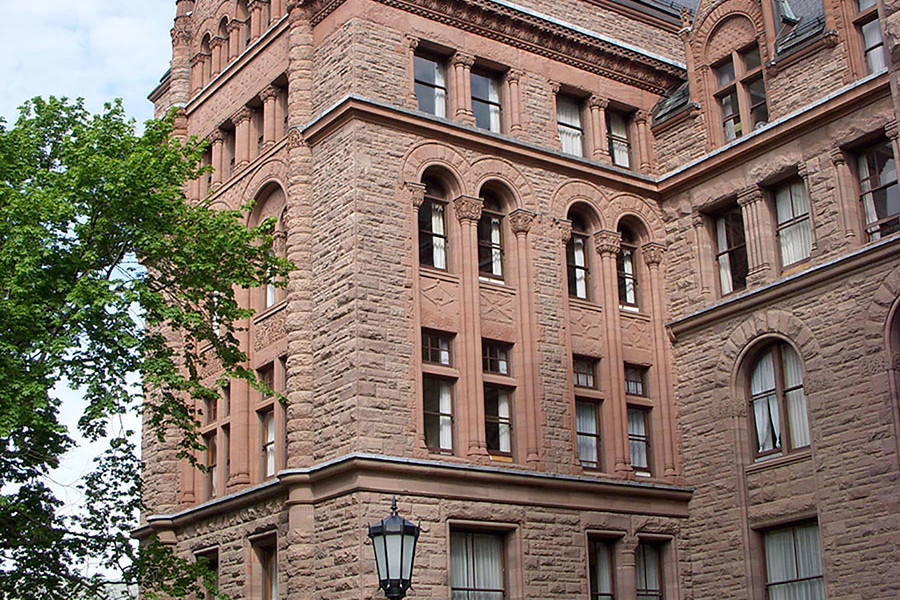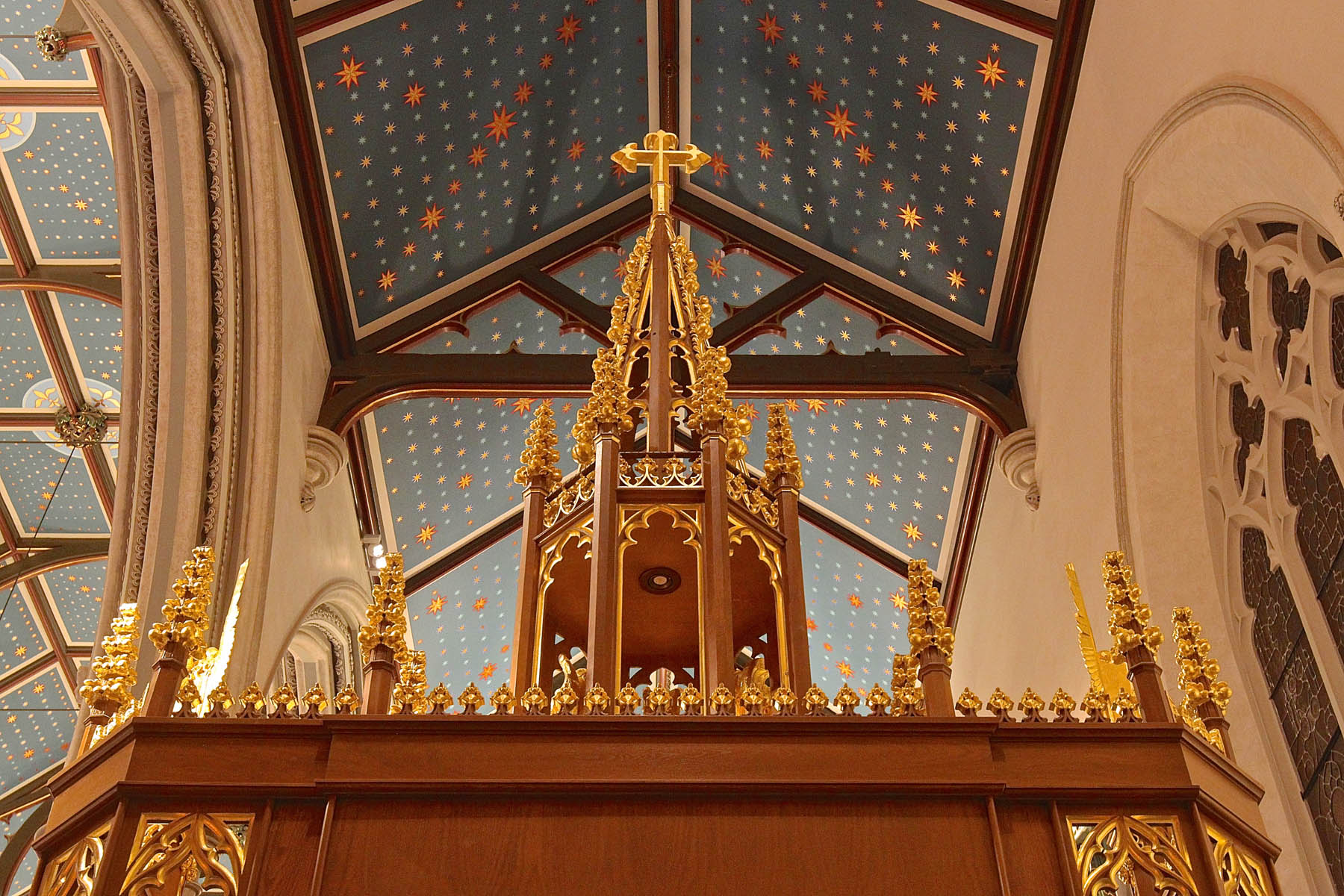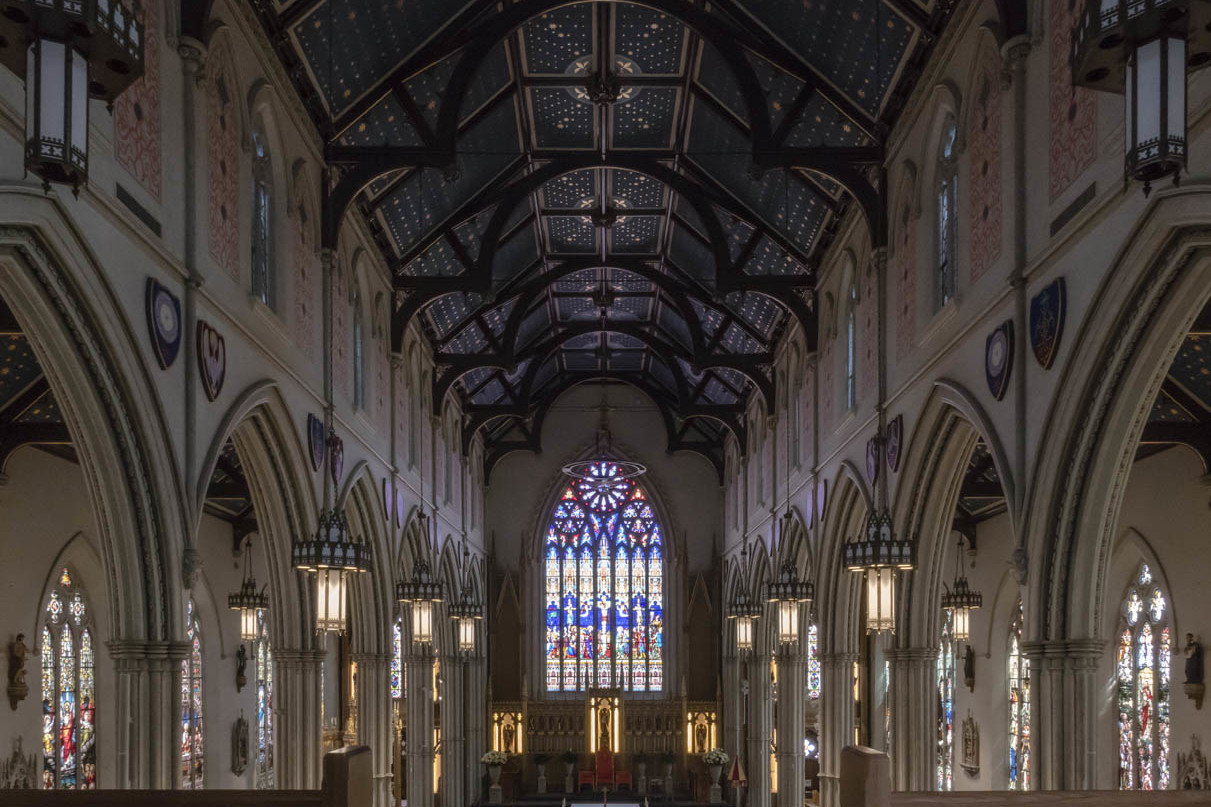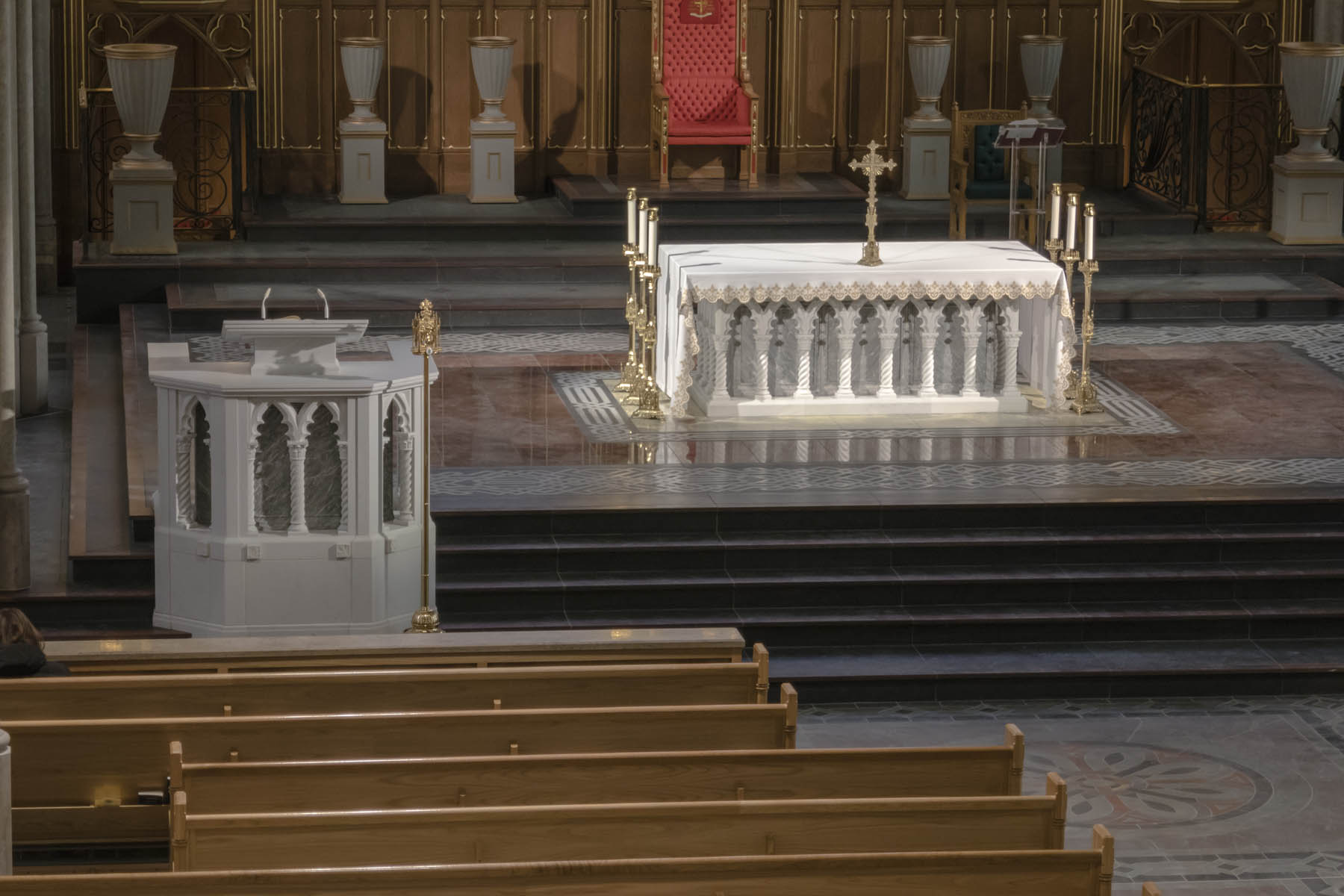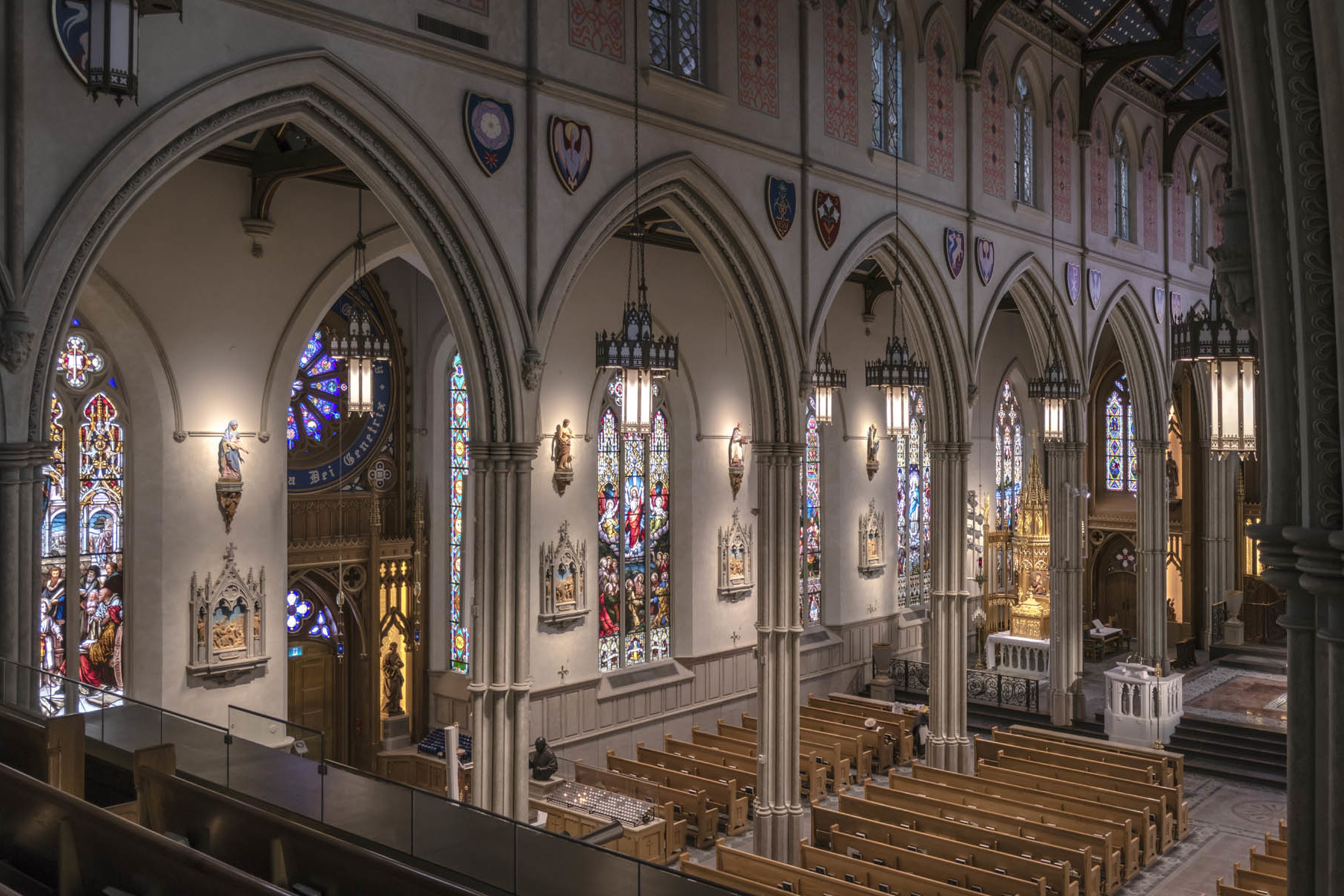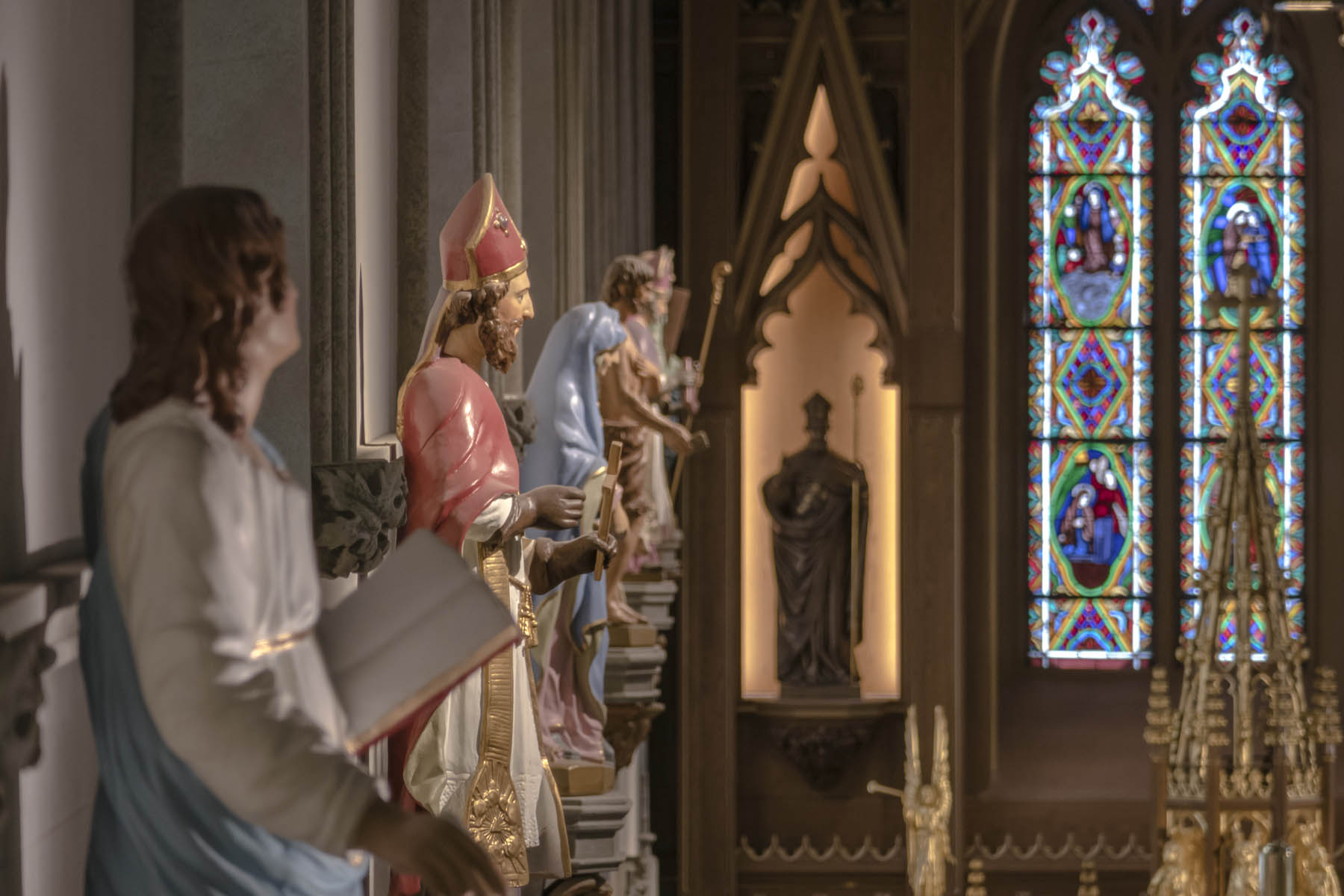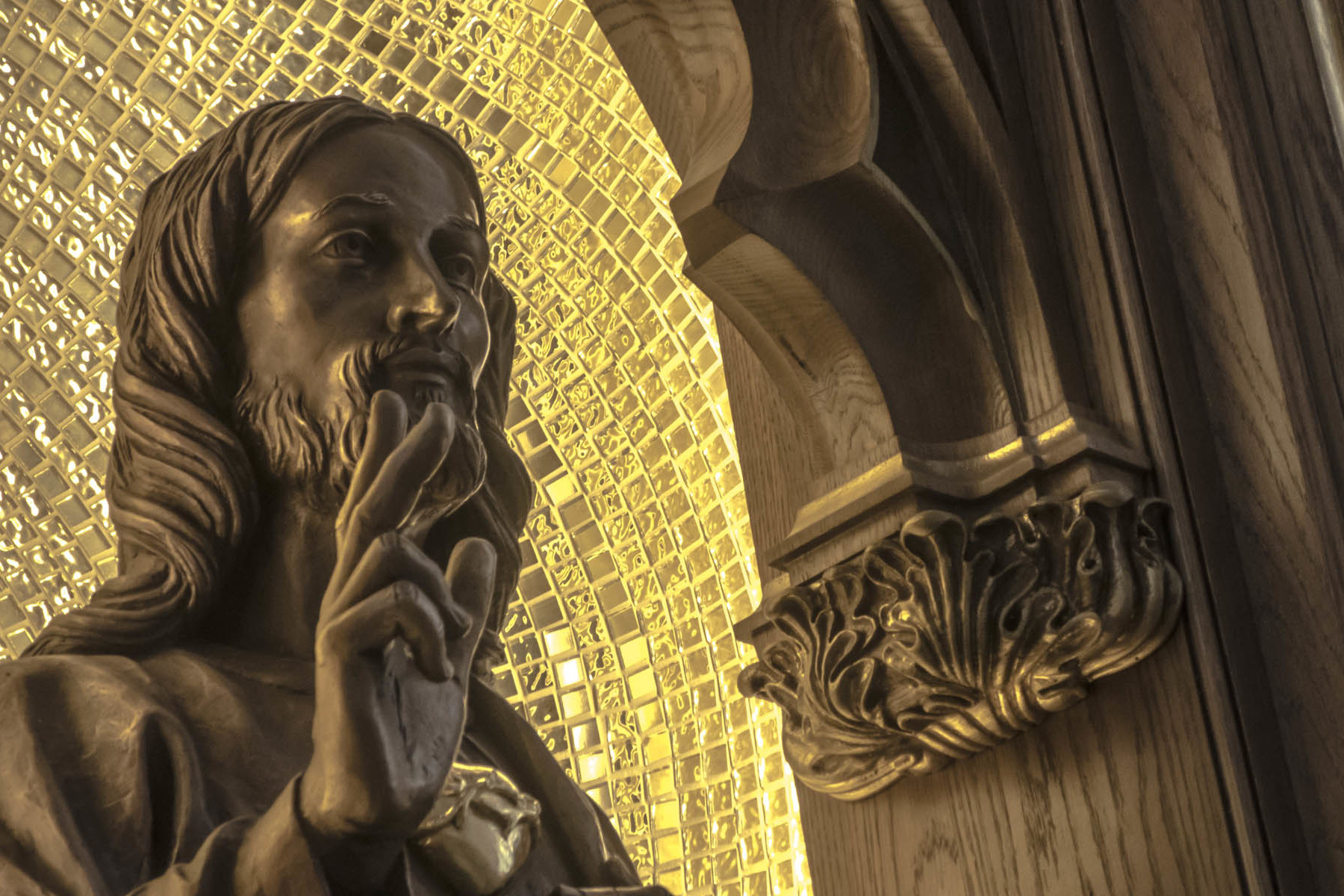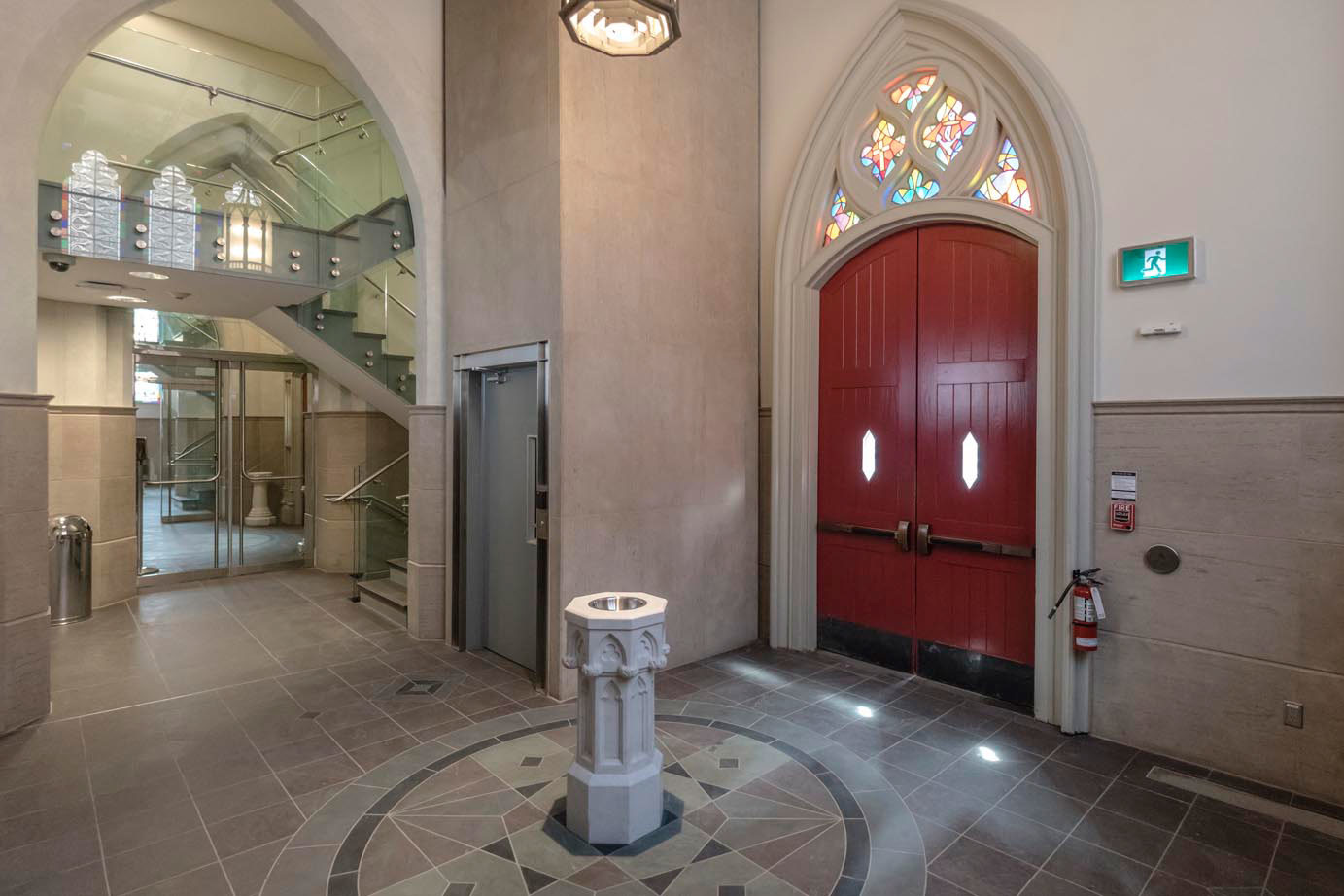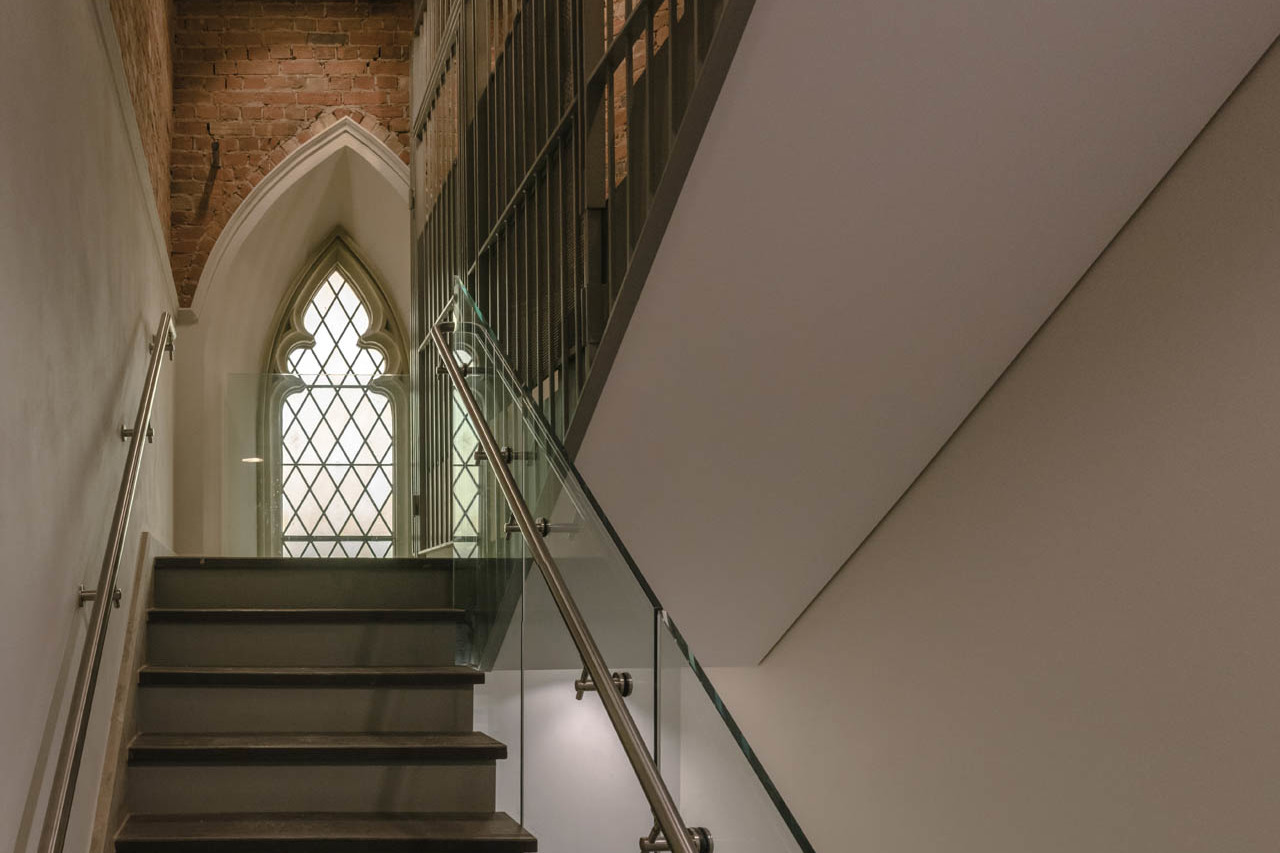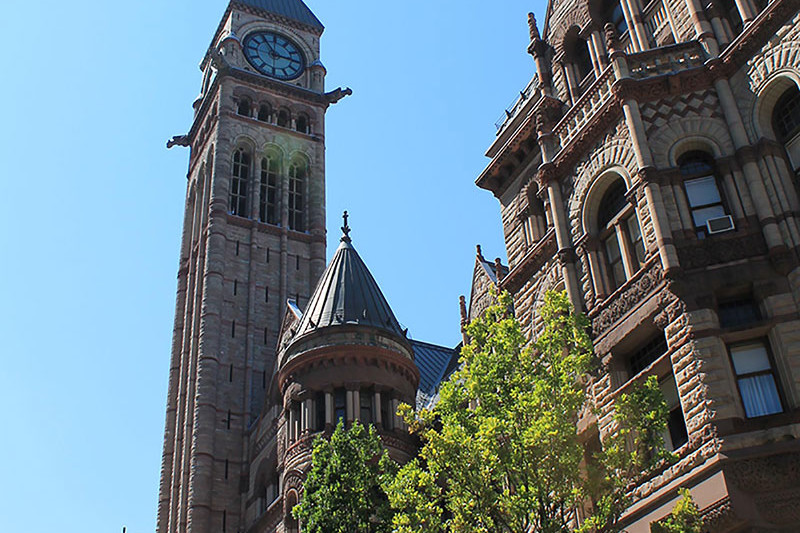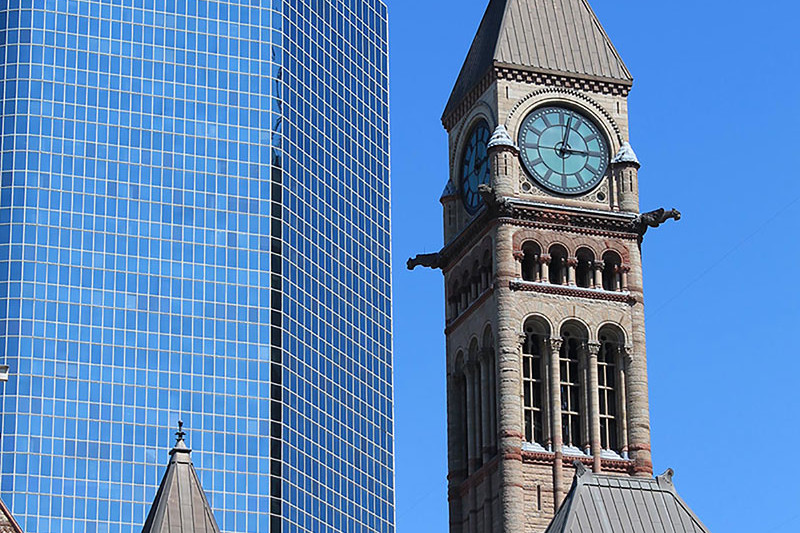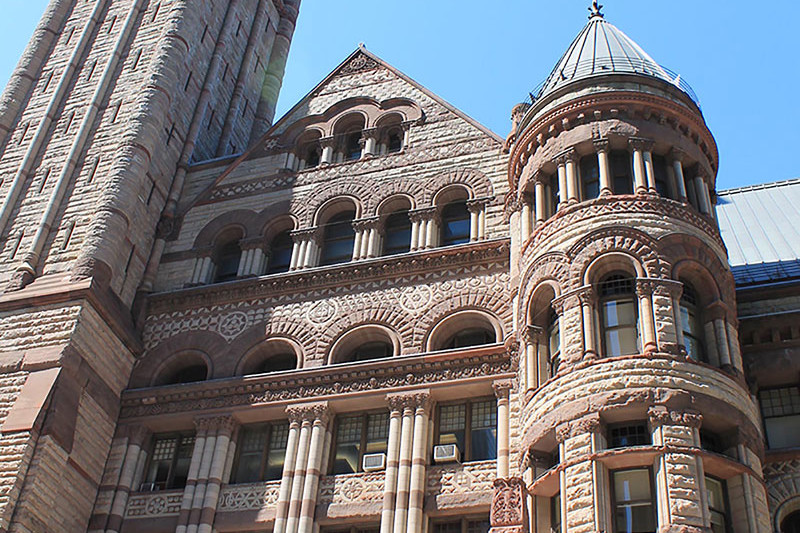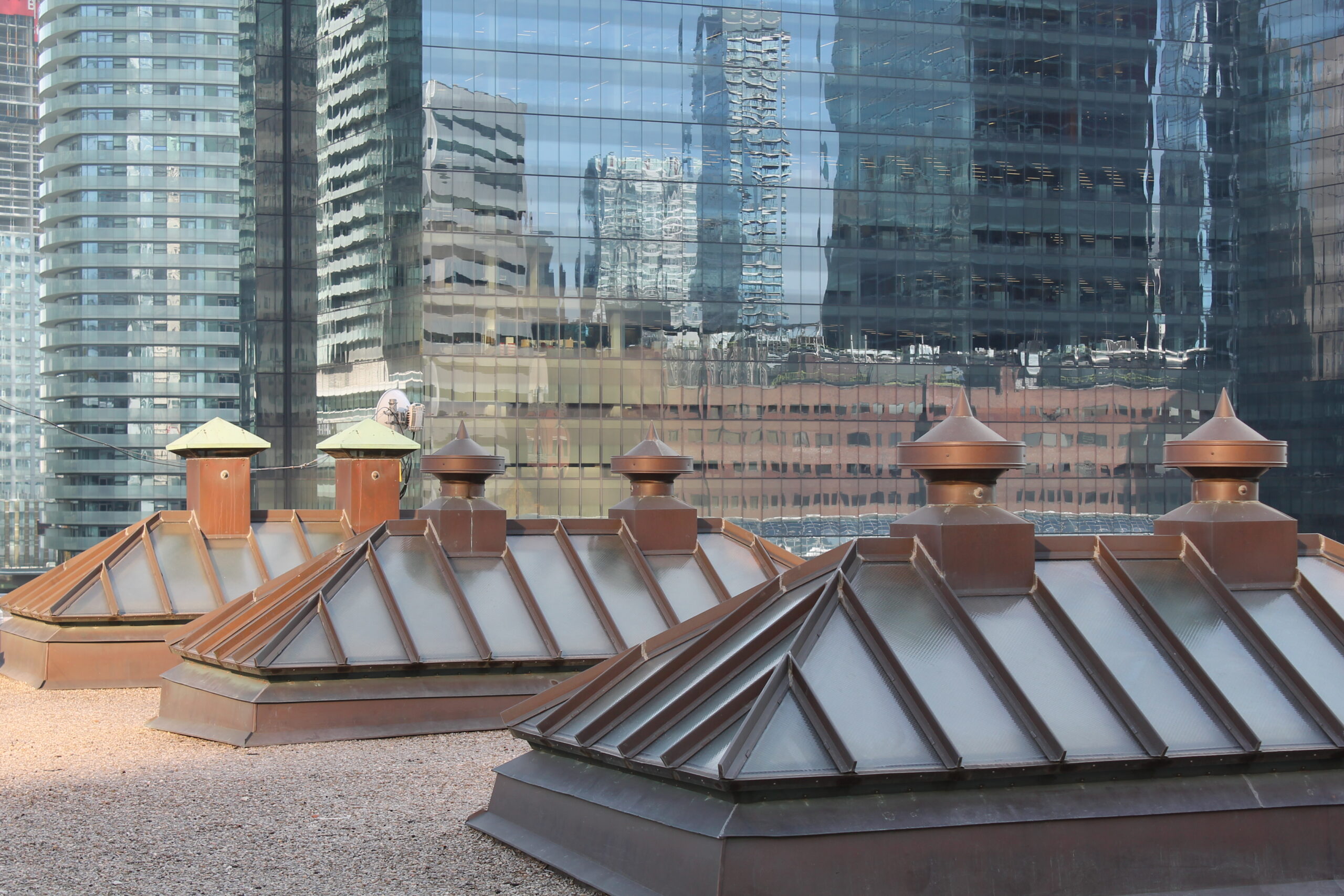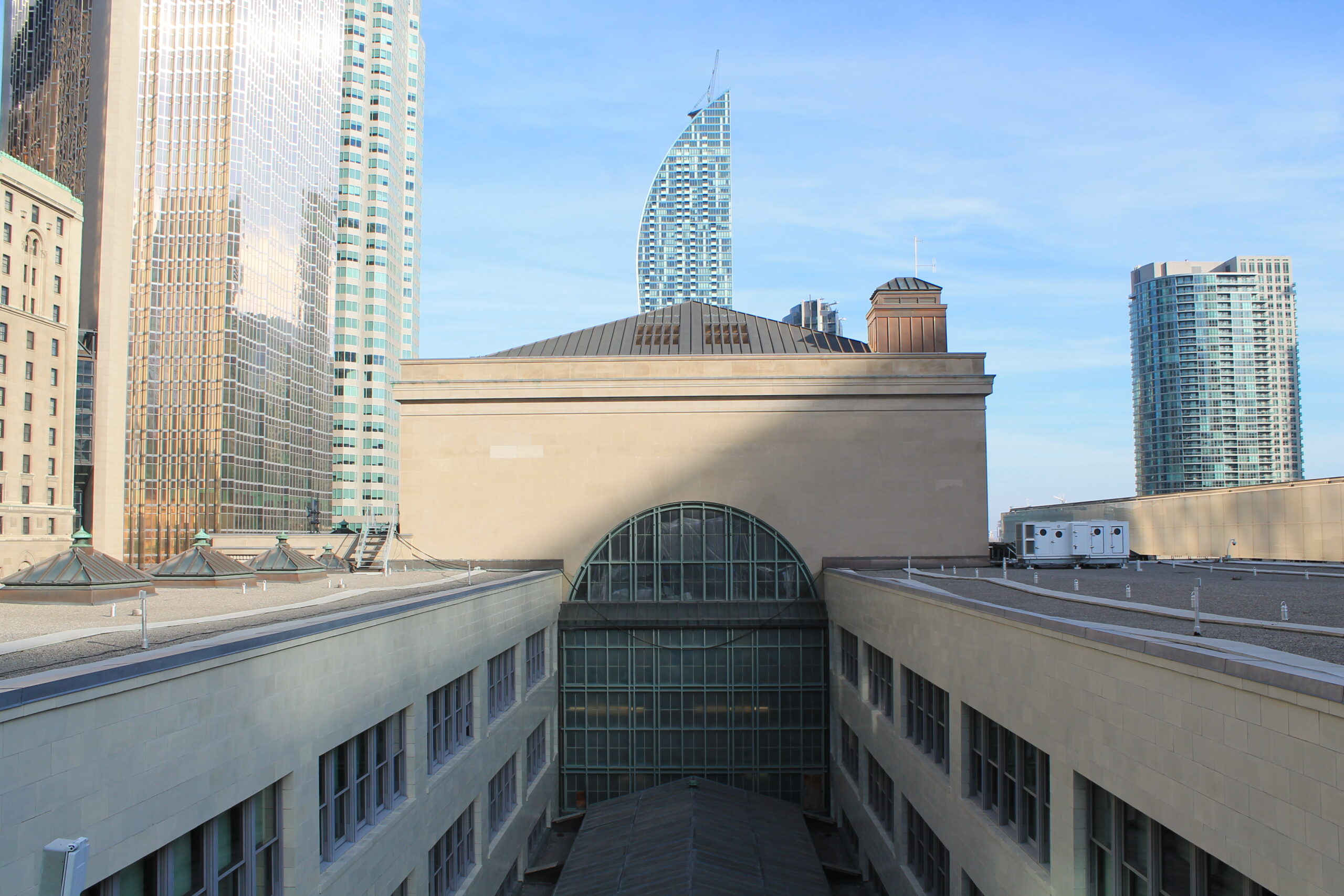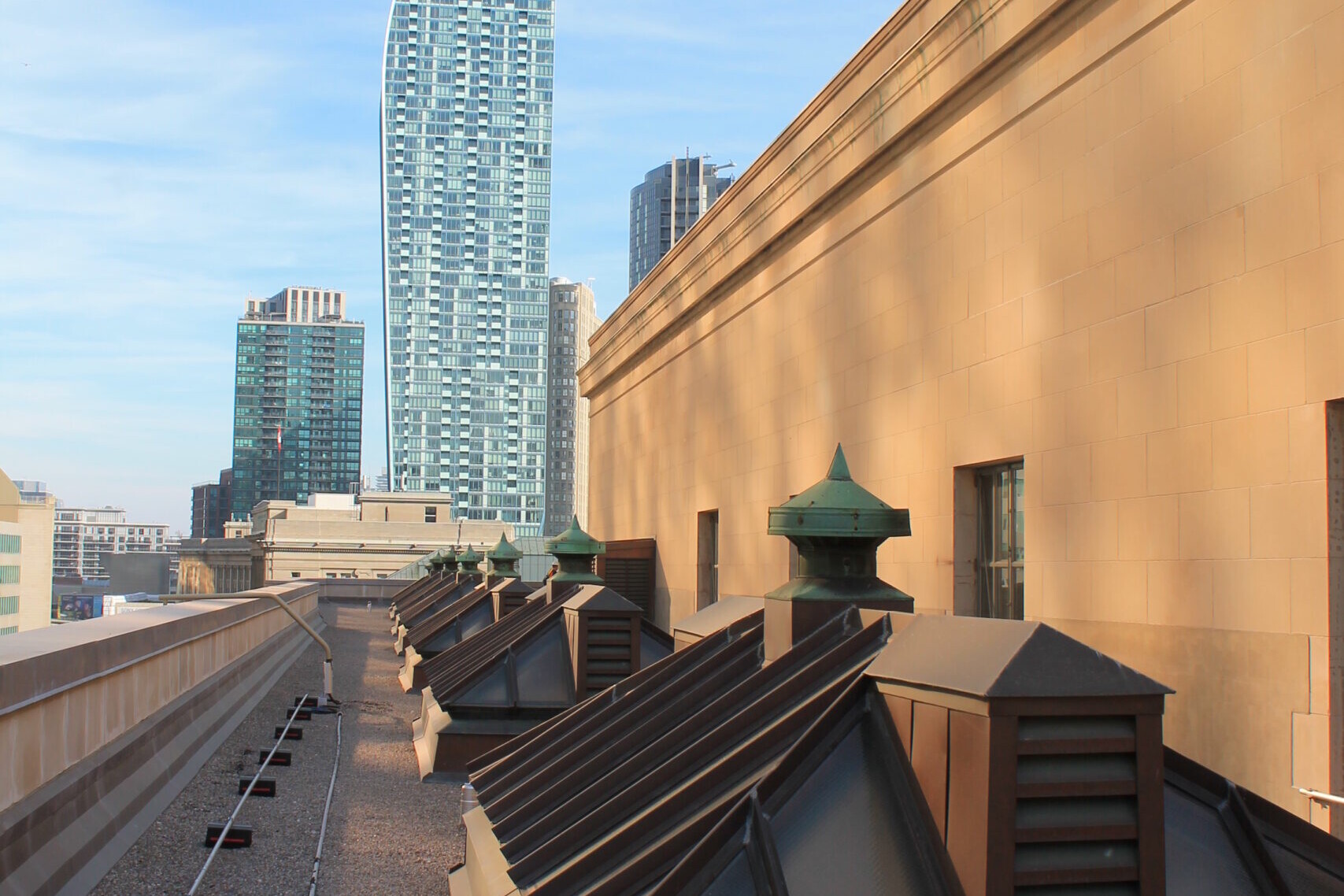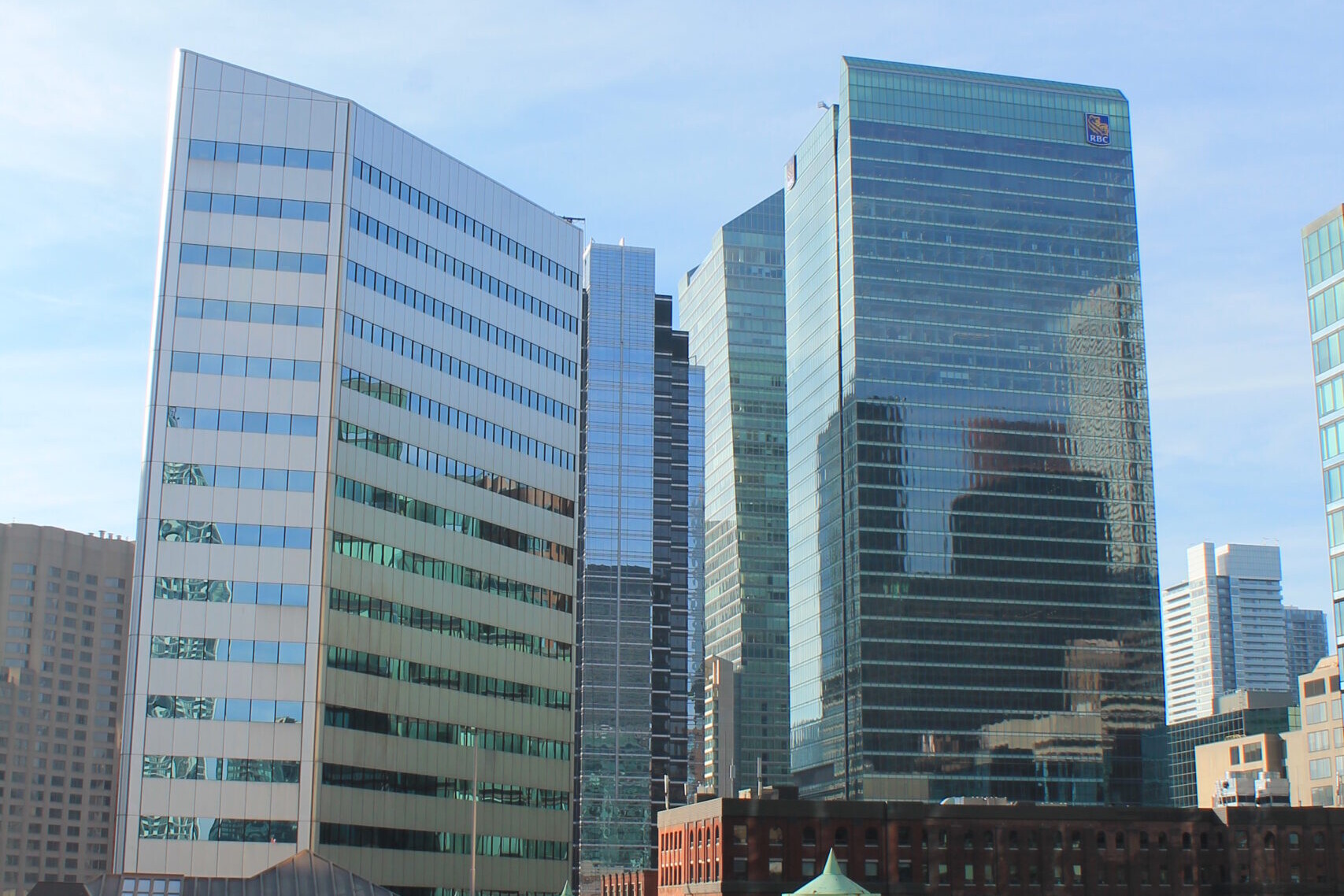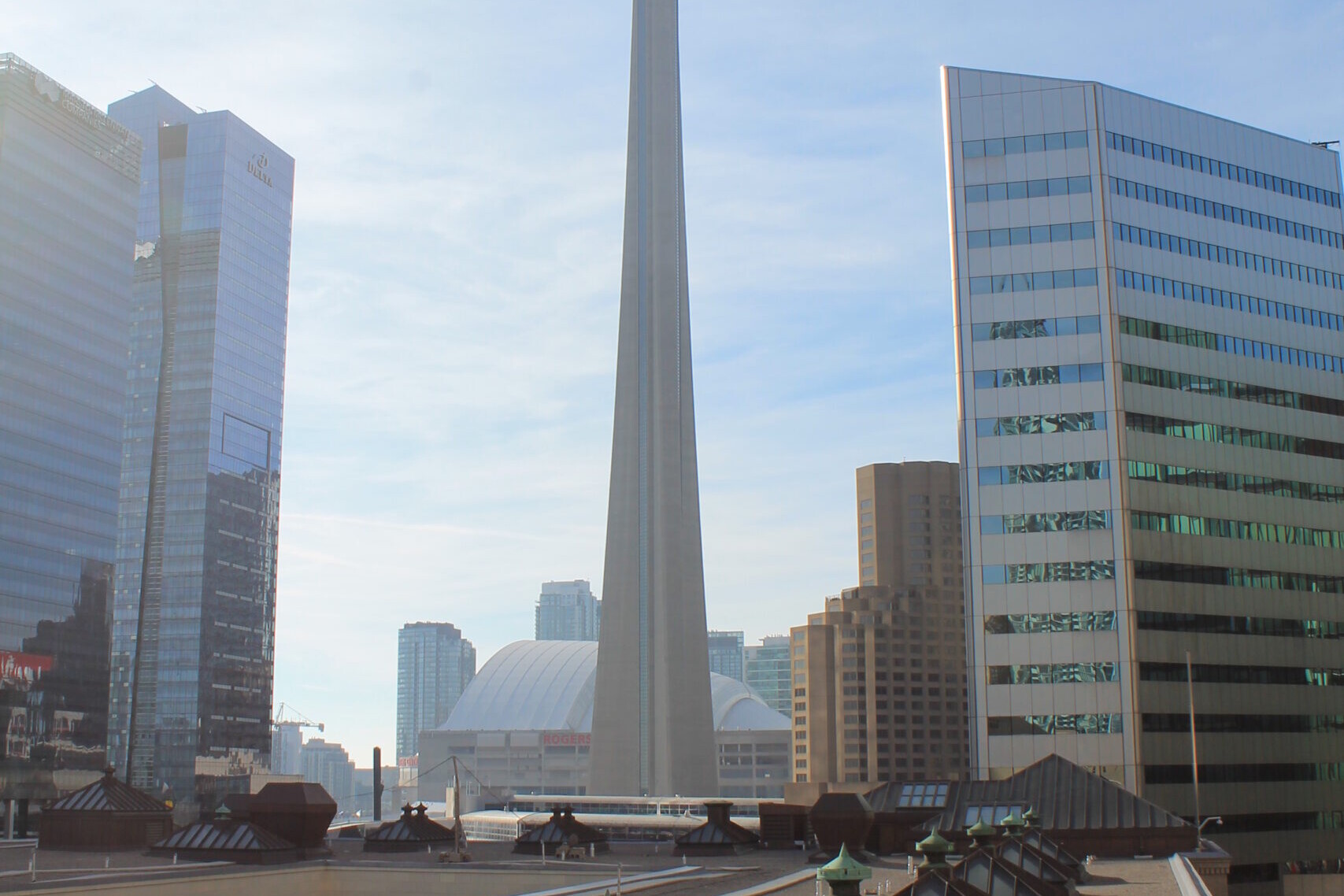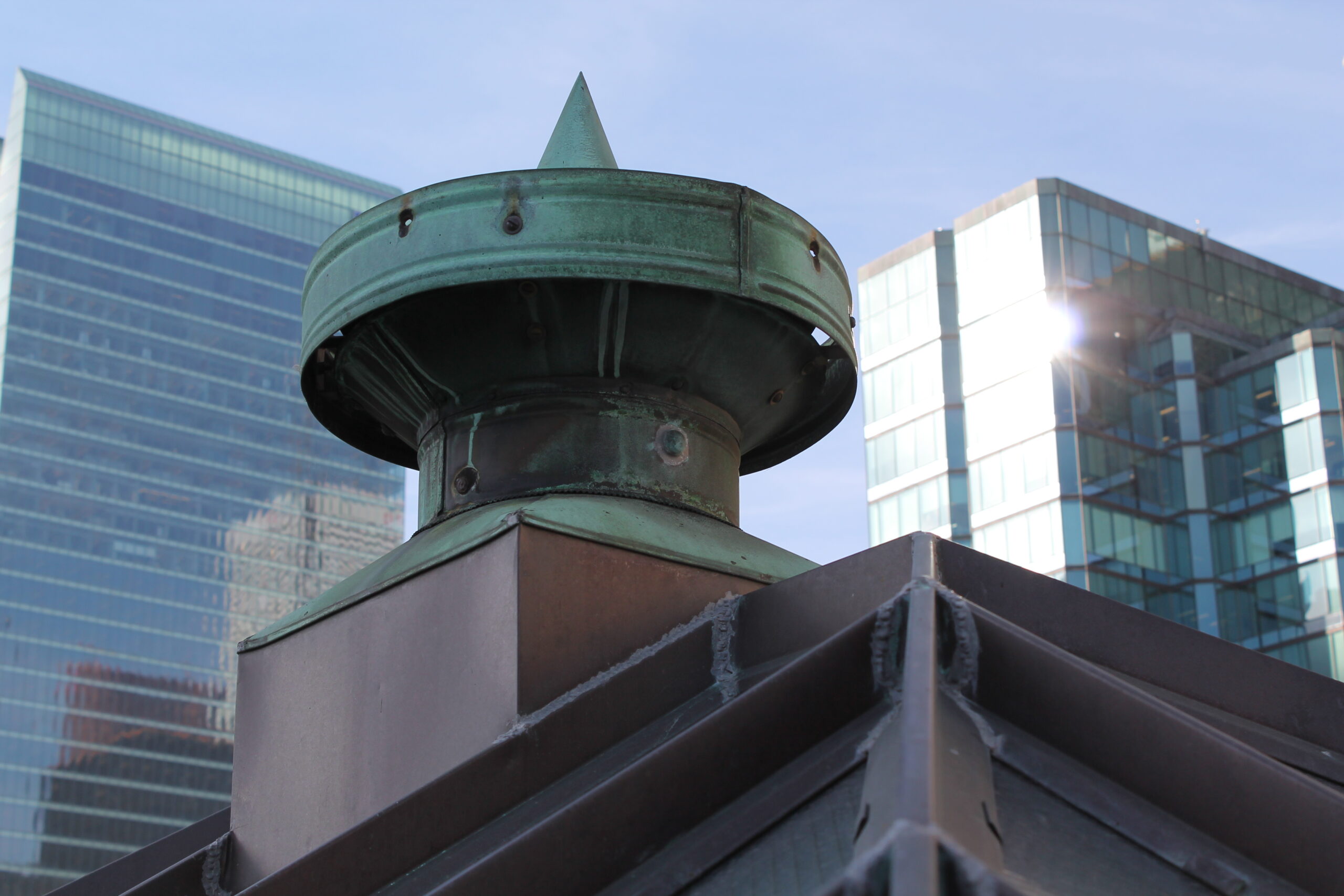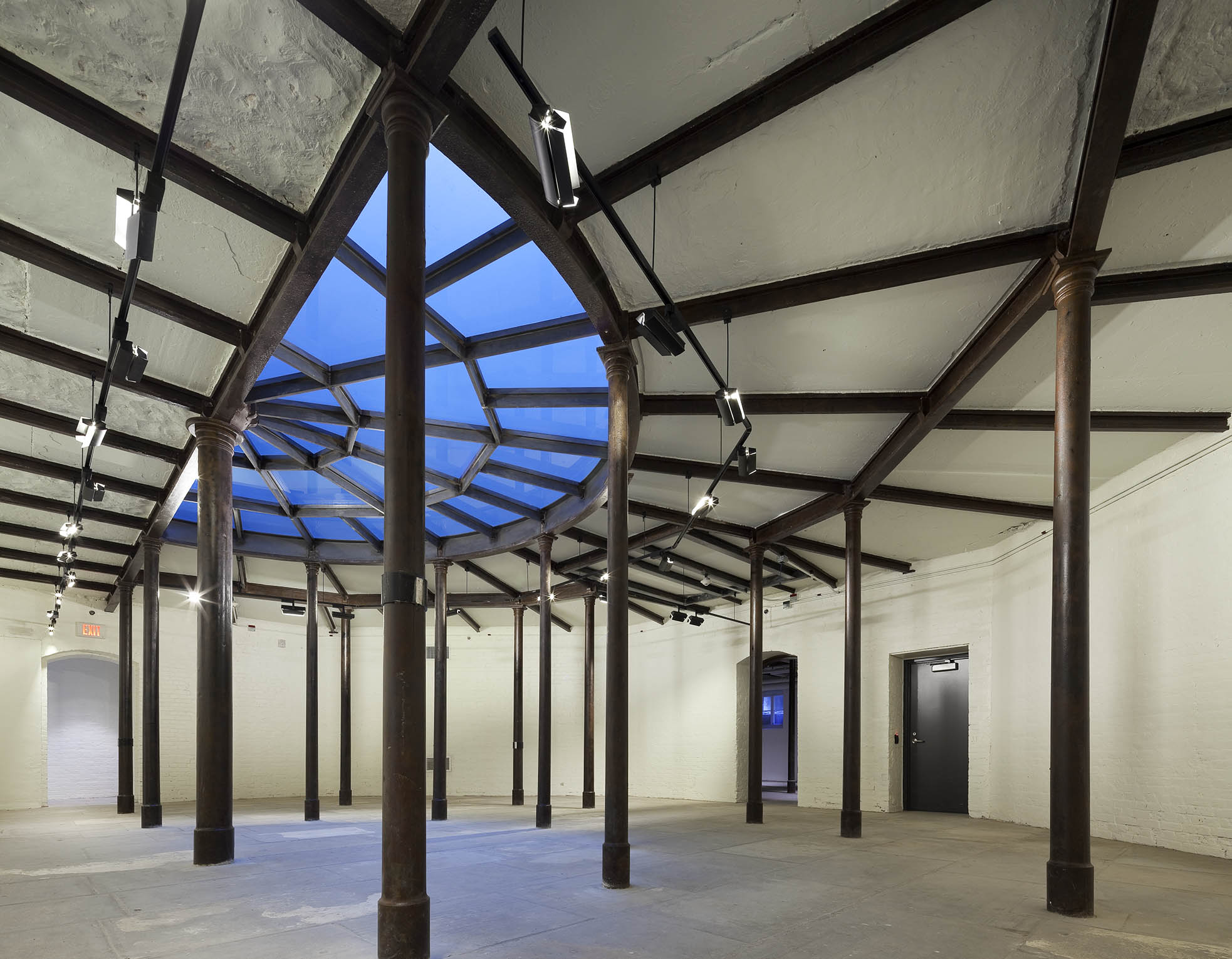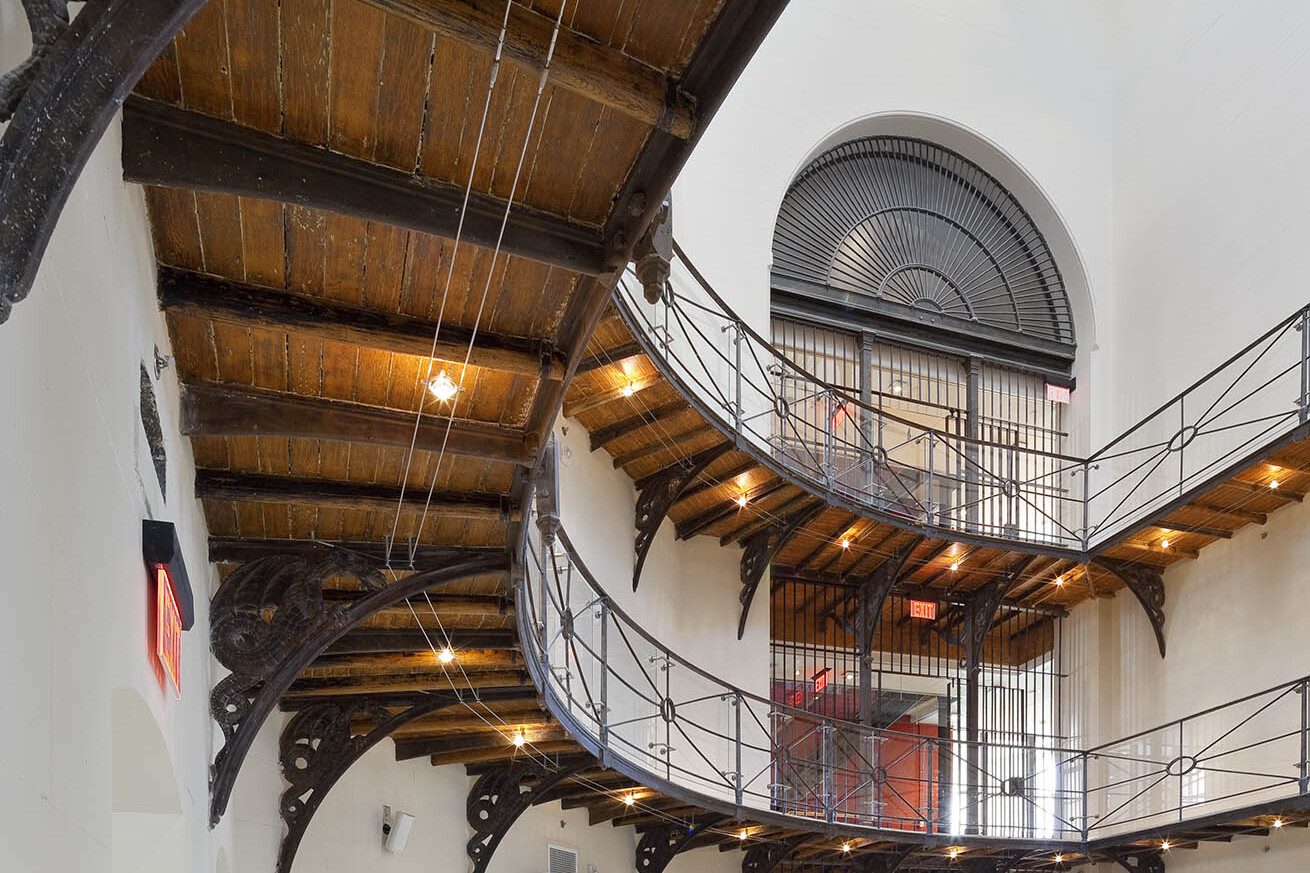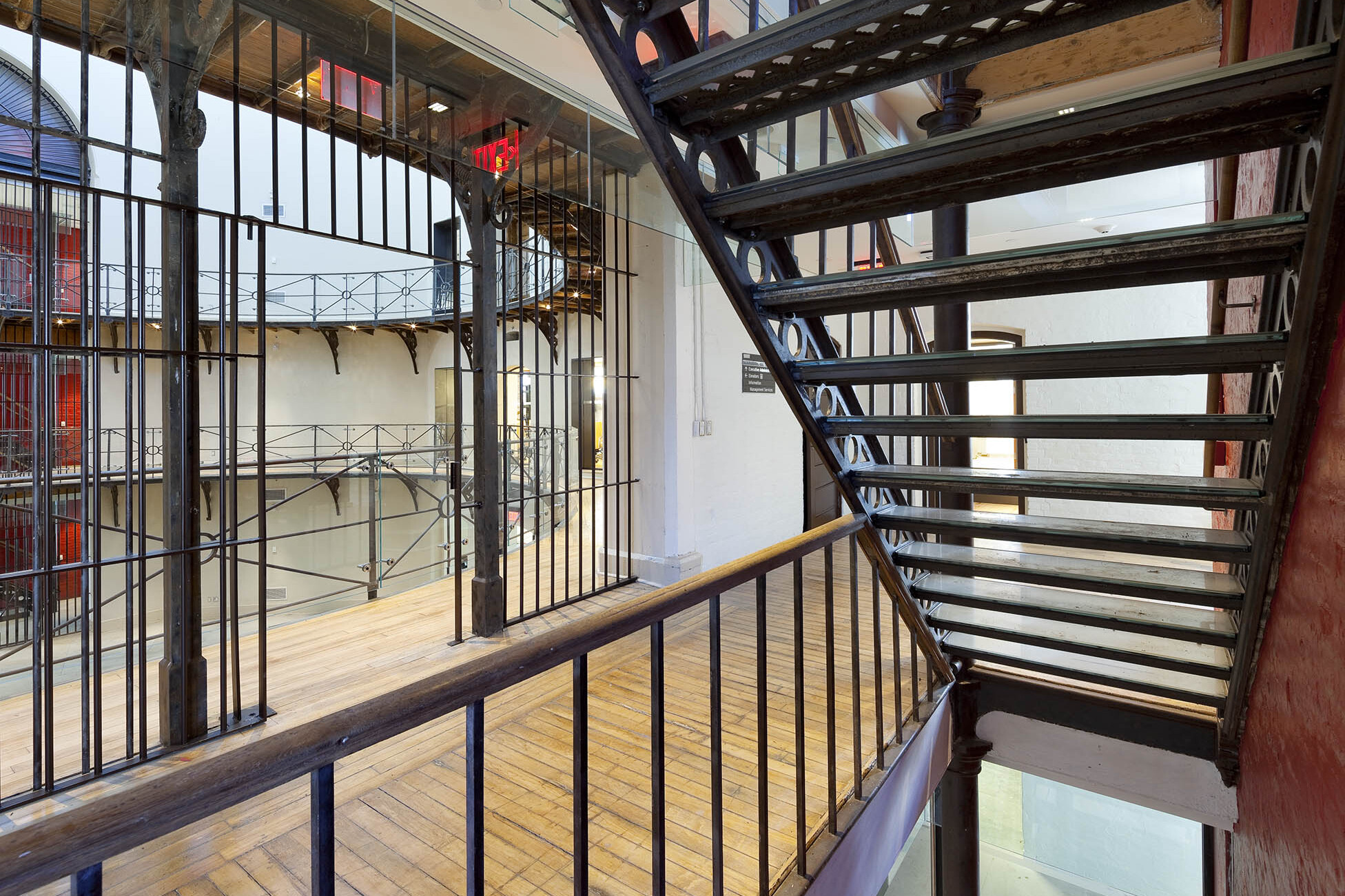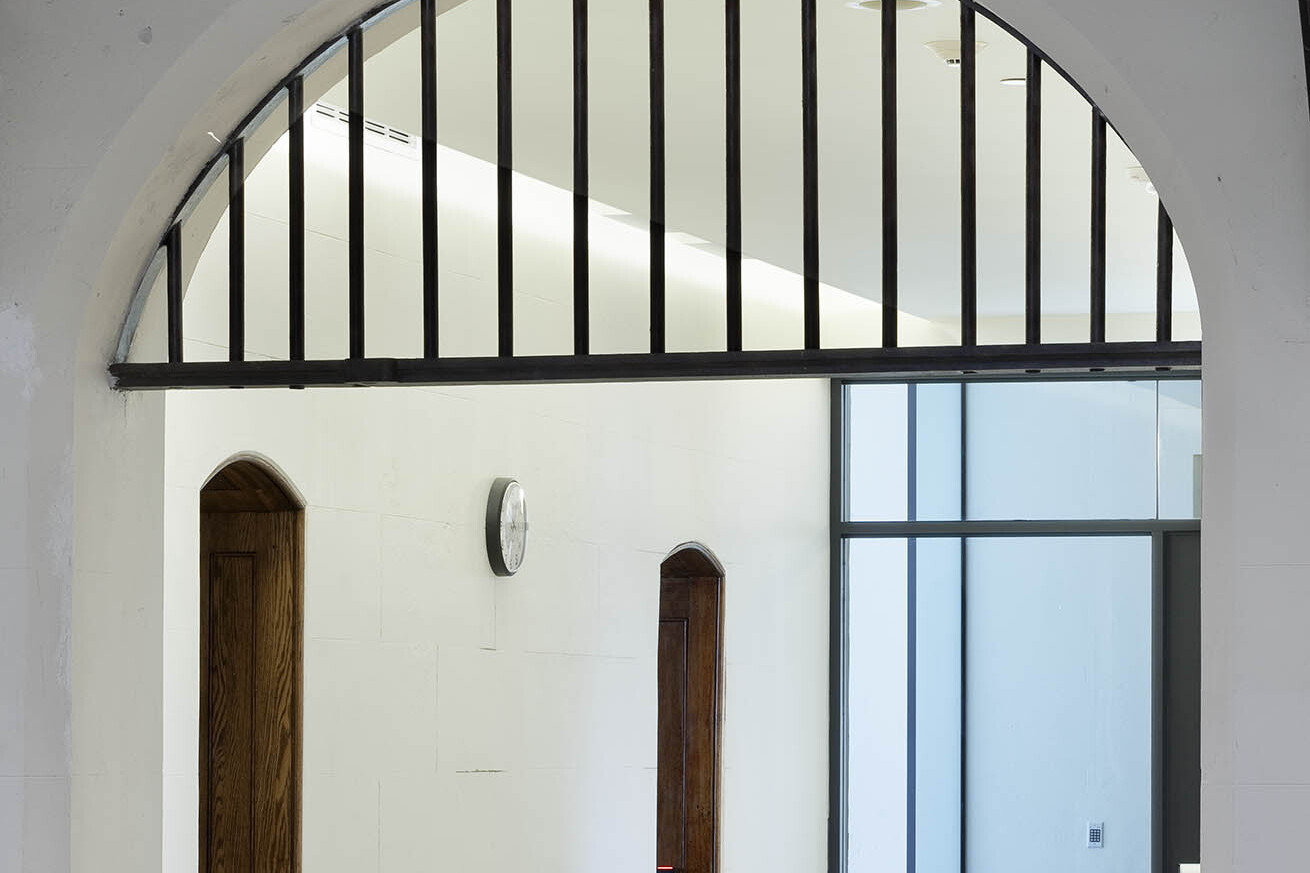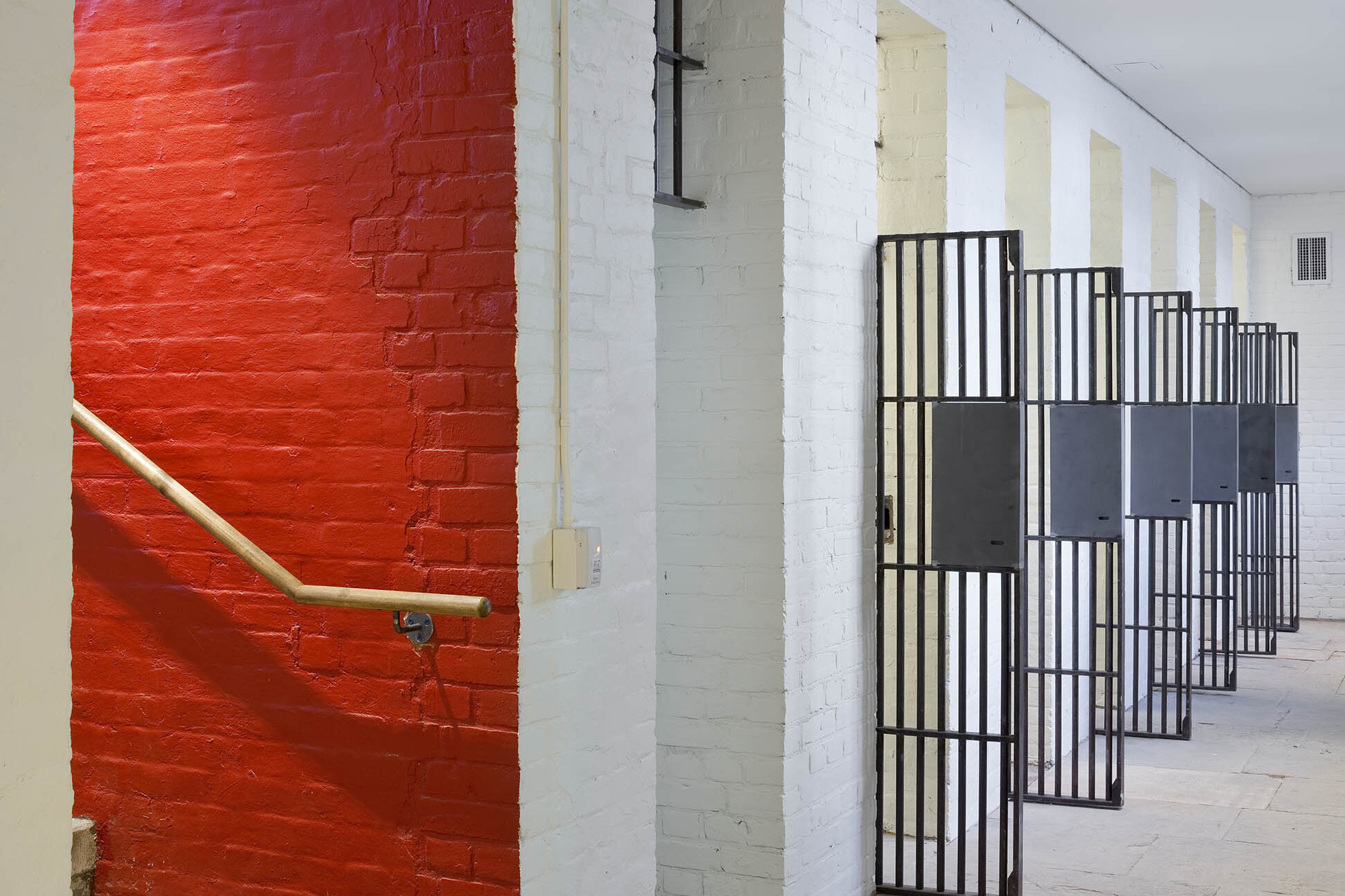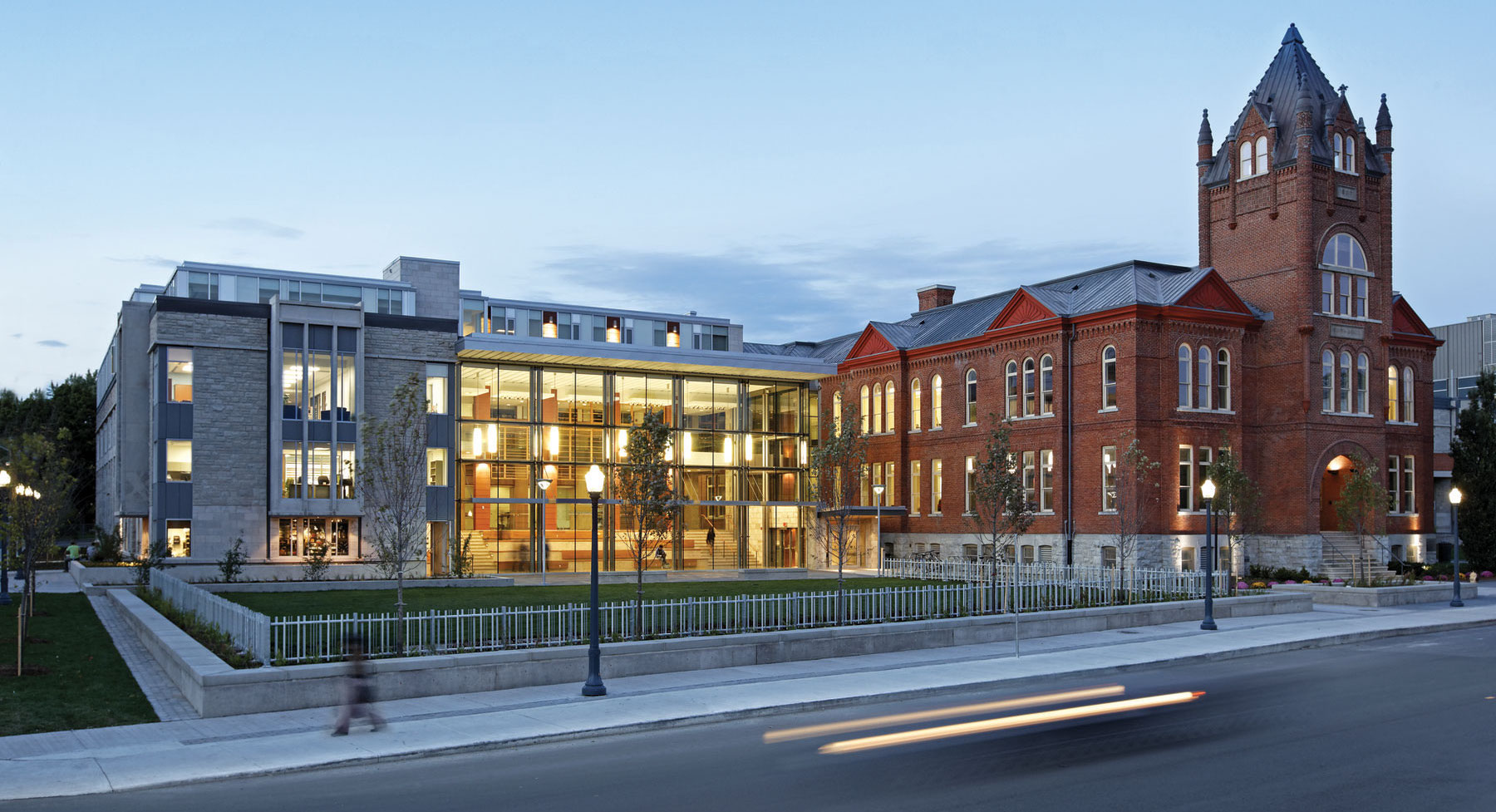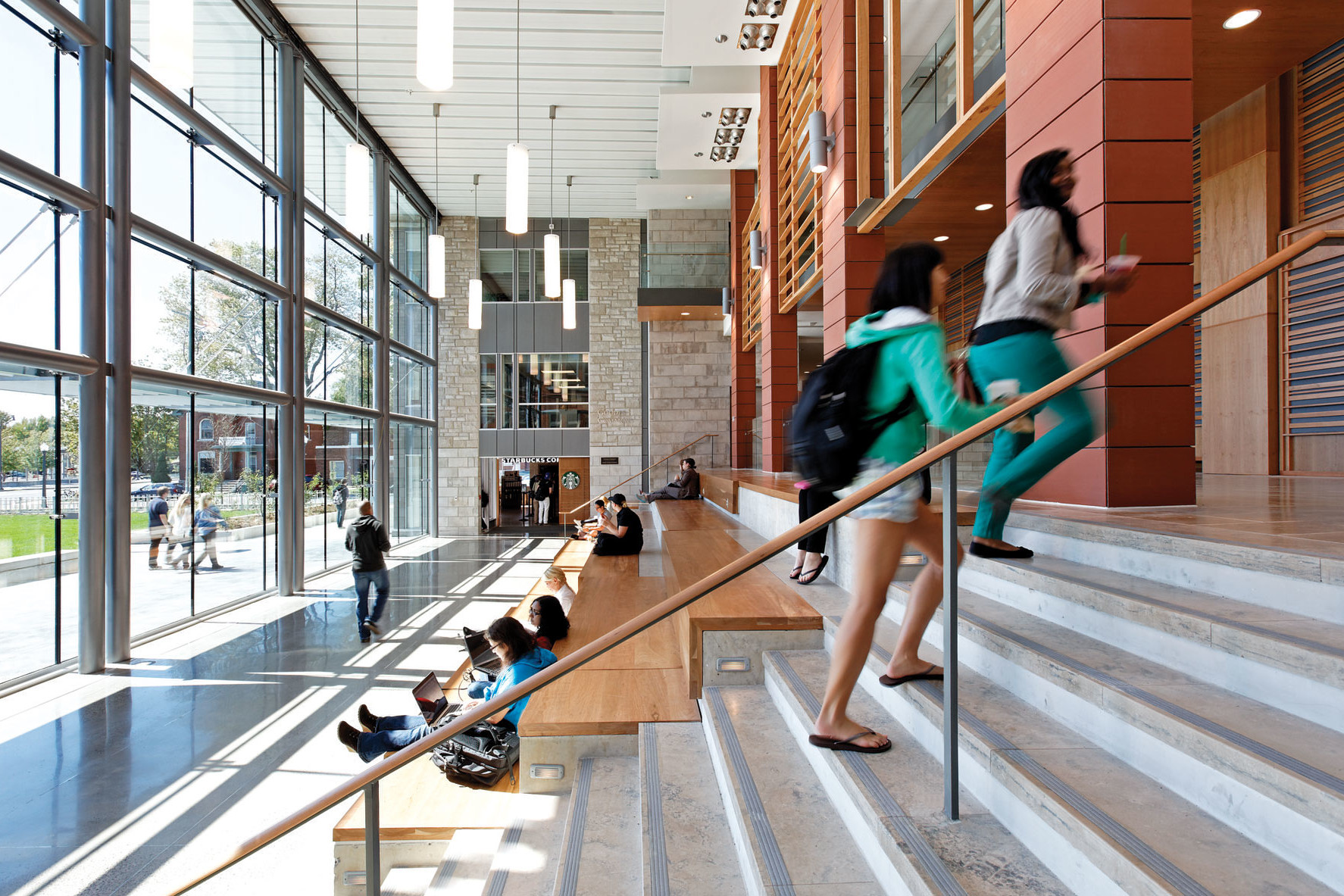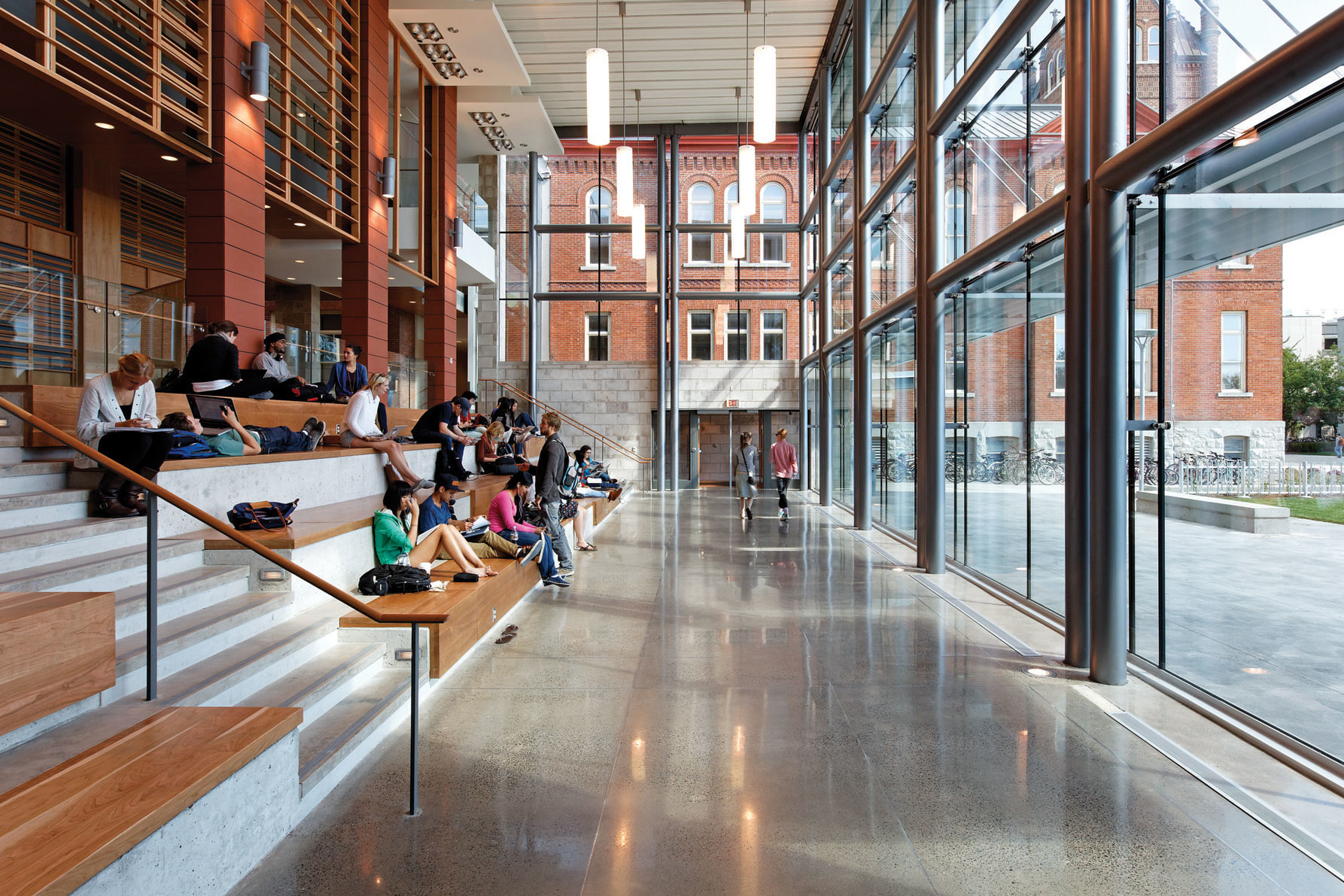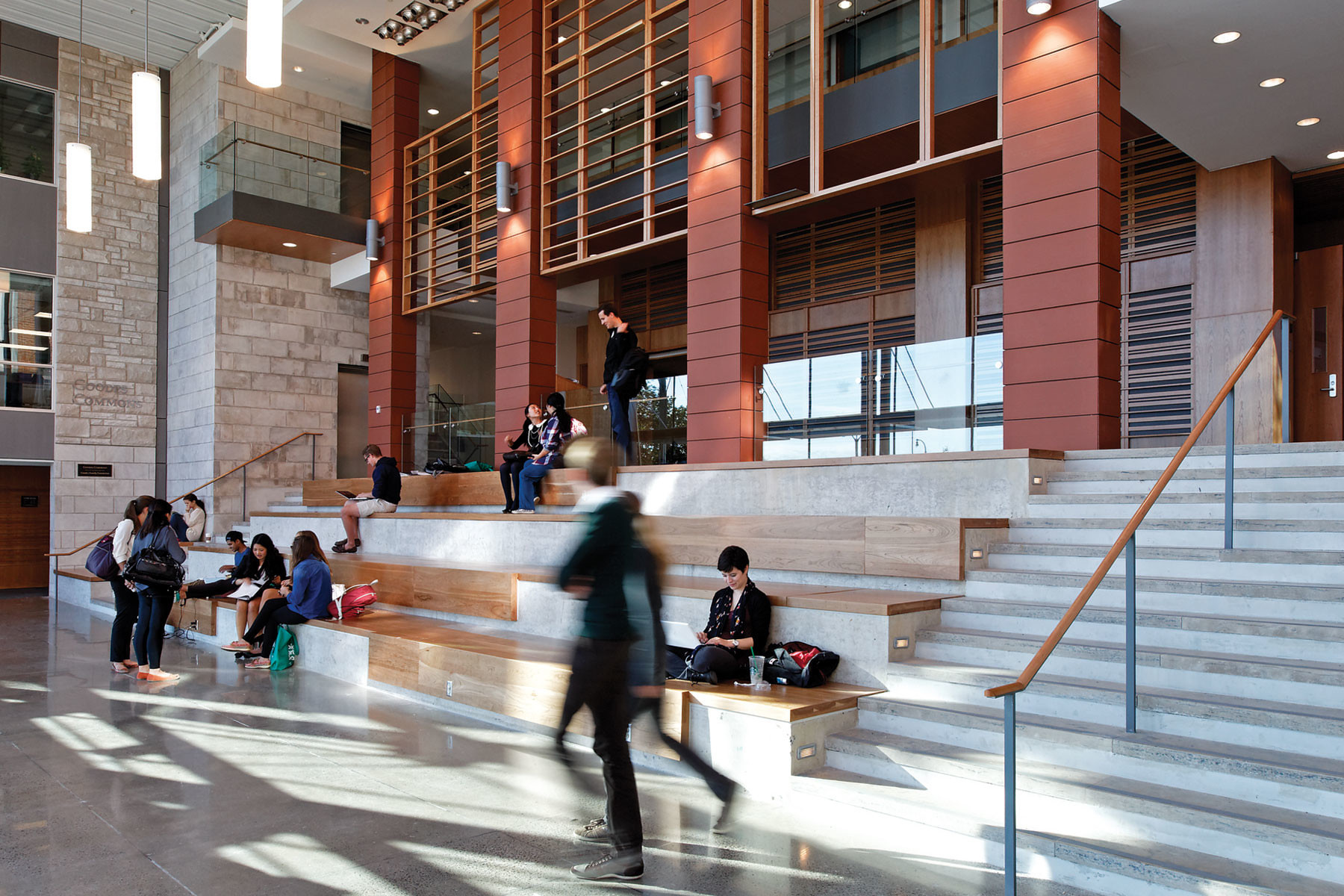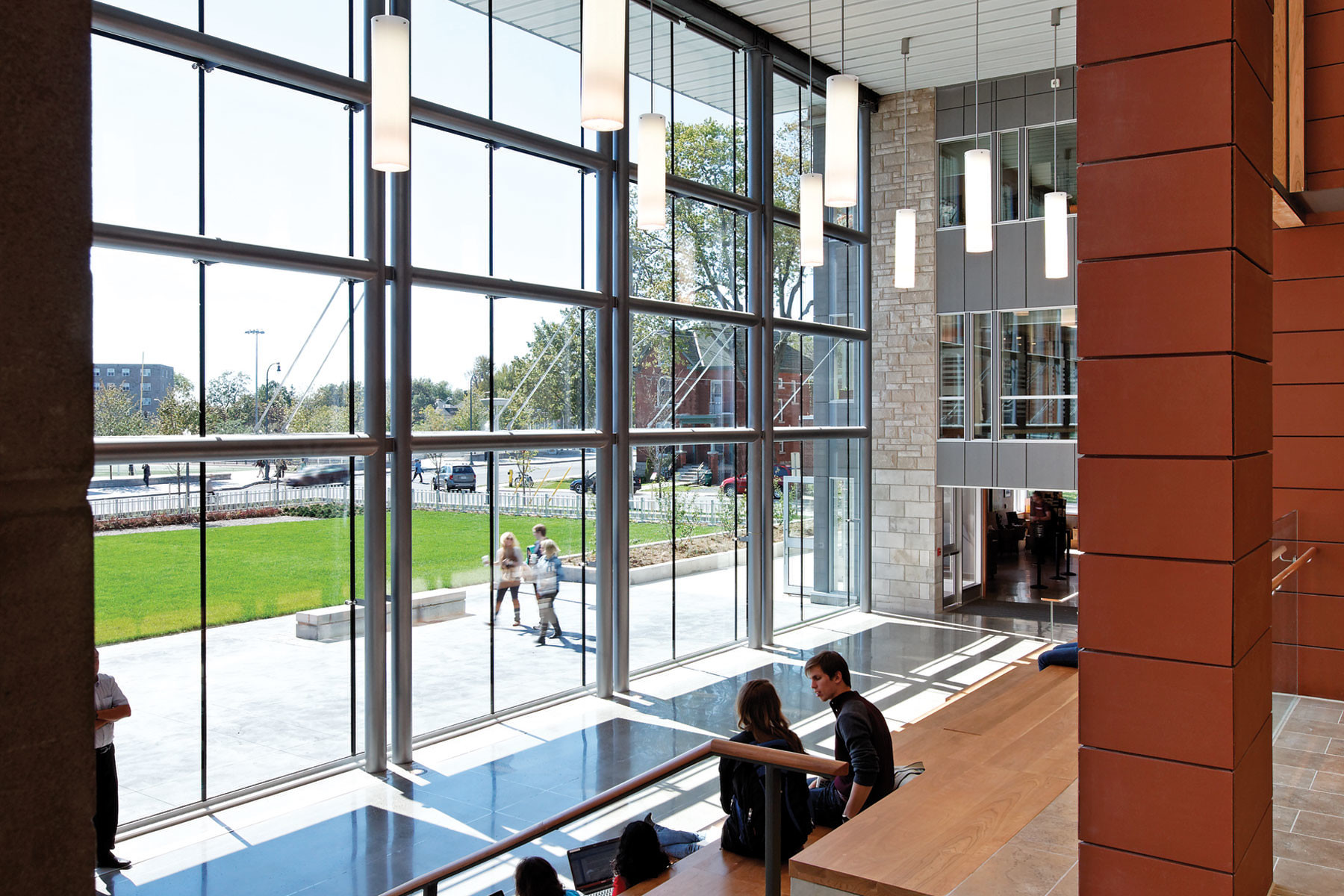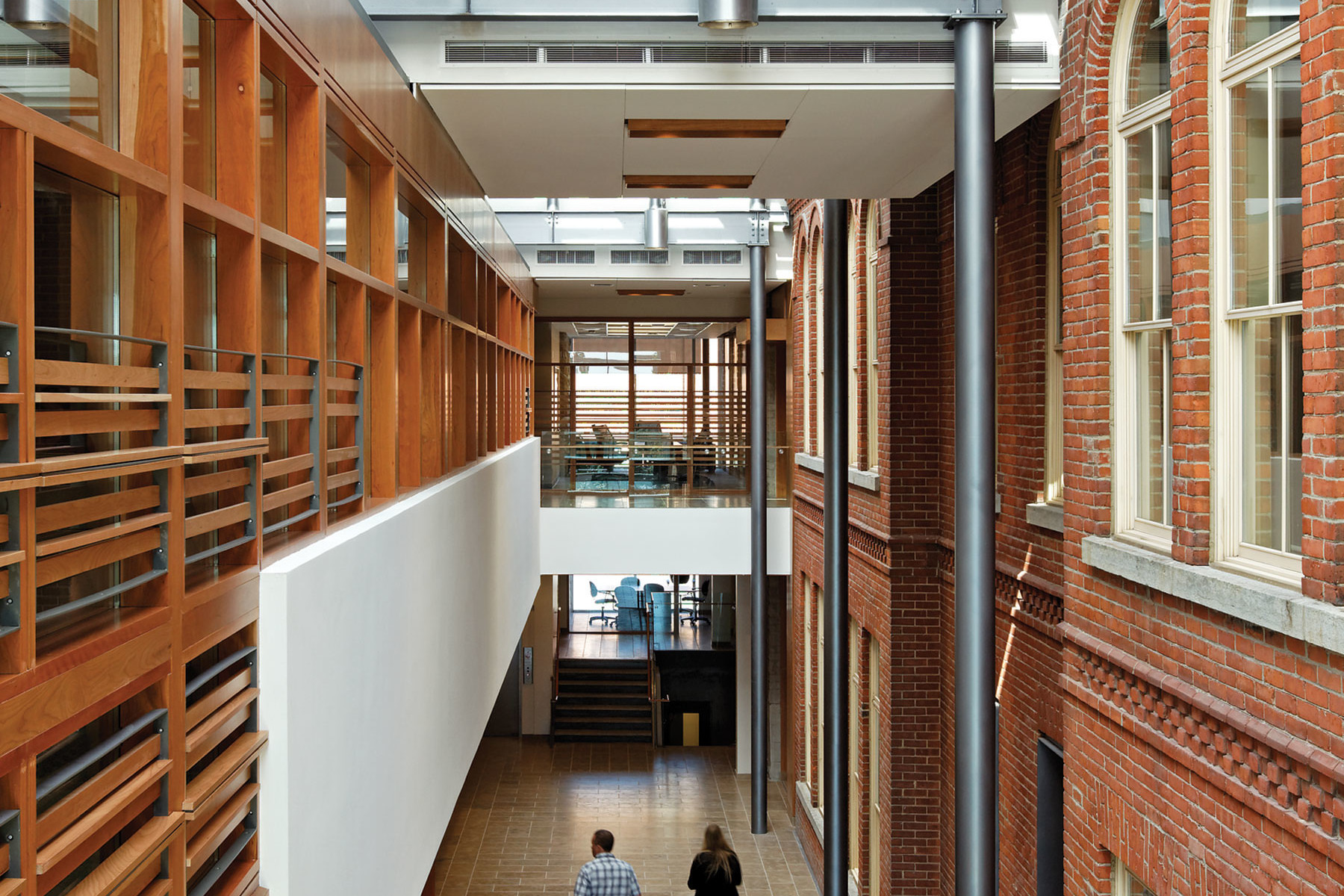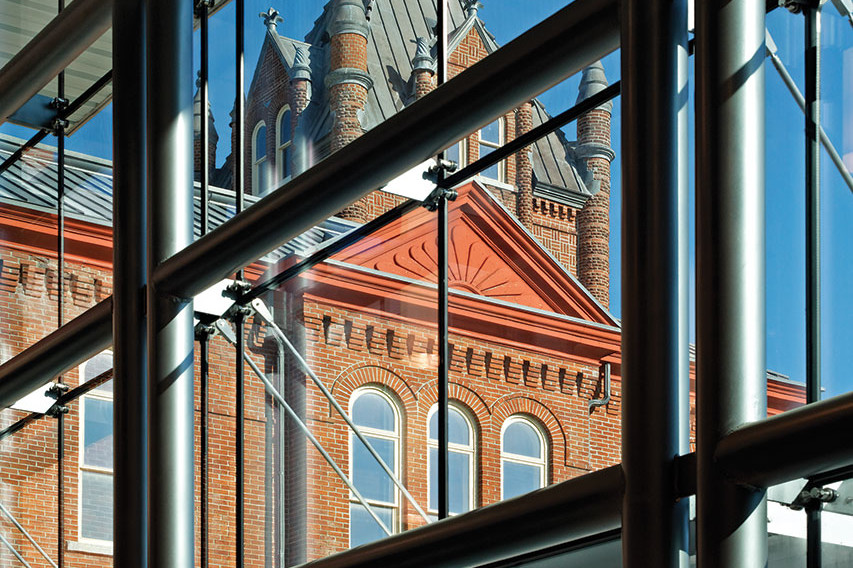Toronto Power Generating Station
+VG Architects was the design leader for the winning proposal submitted by Pearle Hospitality to Niagara Parks Commission for a transformational $200 million-plus private-sector investment to restore the National Historic Site while creating an unparalleled visitor experience, including the first five-star boutique hotel at the falls, befitting its location overlooking iconic Horseshoe Falls.
Opened in 1906 to supply hydroelectric power to the Toronto market and mothballed since 1974, the palatial powerhouse was designed by Toronto-based architect E. J. Lennox (1854-1933), best-known for Toronto Old City Hall and Casa Loma.
“The sheer scale of Toronto Power is unrivalled by any other Beaux-Arts-style building in Canada other than Union Station,” says Robert G. Hill, author of The Biographical Dictionary of Architects in Canada: 1800-1950—and Toronto Power boasts finer and more prolific detailing.
The powerhouse redevelopment will provide a world-class visitor experience unlike anything currently offered in the destination or the province, including the first and only five-star boutique accommodation at Niagara Falls, a variety of culinary offerings, multiple indoor and outdoor free public viewing areas, a craft brewery, a wellness and social spa, theatre, museum and art gallery and event space.
LOCATION
Niagara Falls, Ontario
COMPLETED
2027
SIZE
300,000 ft² – 500,000 ft²
SERVICES
Adaptive Reuse
PRESS
The Ventin Group Ltd. to be Prime Consultant for $200 million redevelopment of Toronto Power Generating Station at Niagara Falls
Canadian Architect
Toronto Power Generating Station
Architizer
Reimagine Historic Toronto Power Generating Station
Niagara Parks
Niagara Parks Unveils Groundbreaking Private Sector Revitalization Investment for Toronto Power Generating Station
The Niagara Independent
Pearle Hospitality Awarded Redevelopment of Niagara’s Toronto Power Generation Station
Urban Toronto
Elora Mill owner chosen to redevelop Toronto Power Generating Station
CTV News Kitchener
Niagara Parks Power Station
In 2017, Niagara Parks’ engineering team began a thorough assessment of the century-old building to determine the state of its structural integrity.
The initial inspection revealed water from the Niagara River was still entering the plant and flowing into the penstocks. The large headgates that acted as a barrier had deteriorated from rust. Safety was of the utmost concern.
Based on the findings of the assessment, a concrete barrier was placed in front of the penstocks to stop water from entering the power station. A swing stage was also built to allow access to different levels of the plant where geotechnical and structural inspections were completed.
Phase 1 Construction
Phase 1 construction took place between 2018 and 2021, with most of the construction concentrated inside the 600-foot forebay to protect the generator hall.
Part of the forebay was reserved to create a 100-foot water feature that will show visitors how power generation began with water flowing into the plant. On either side of the water feature, new floor space was created for amenities such as shopping, guest services and future culinary experiences.
The original equipment in the generator hall was meticulously shined and restored to showcase the incredible power generating technology built in the early 1900s.
Heritage Preservation
As the environmental and cultural stewards of the Niagara River corridor, preserving the heritage of the power station was of the utmost importance, driving all the decisions during the adaptive reuse construction process.
A comprehensive strategic conservation plan determined what elements were most important to preserve. All the equipment showcased in the generator hall have been carefully cleaned and left as they were when they were originally built. The power station was built utilizing durable materials such as limestone, granite, brass, and copper.
More than 400 people have worked in the facility during the adaptive reuse construction, including more than 100 staff from Niagara Parks.
Featured Machinery
There are 11 generators inside the power station. The first five were installed when the power station opened in 1905. The remaining six were added up to 1924, when the plant was fully operational. The generators inside the power station have been cleaned and painted blue, the original colour prior to the power station closing in 2006.
Each of the generators has a corresponding governor that controlled and regulated the rotational speed of the turbine. The governor made it possible for the generator to produce a constant frequency of alternating current electricity. The frequency was measured in hertz. The governors you see inside the power station have been meticulously cleaned and hand-polished to preserve their heritage quality.
Exciter units were mounted on the same shaft as the main generators and produced DC power for the field windings. They weighed 45,000 pounds and created excitation powered by water. When spinning, the exciters could reach up to 600 rotations per minute! When the power station first opened in 1905, its five exciter units were placed deep underground in the wheelpit. Eventually, it was discovered the environment was too moist, and the exciters were moved to the main generating floor. The exciter placed outside, in Power Plaza, was reduced to 16,000 pounds. A special powder coating was applied to protect it from the outdoor elements.
The Workers
At Niagara Parks, we are fortunate to have many talented and diversely skilled tradespeople who played a vital role in bringing the power station back to life. During the adaptive reuse construction, we employed our electricians, plumbers, masons and laborers.
In addition, approximately 75 contractors were hired and more than 400 people have worked in the facility, including more than 100 staff from Niagara Parks.
LOCATION
Niagara Falls, Ontario
COMPLETED
2021
SERVICES
Adaptive Reuse
AWARDS
2022 Ontario Heritage Award for Excellence in Conservation
Lieutenant Governor of Ontario
2022 Grand Prize Award
Niagara Biennial Awards
PRESS
Industrial Tourism: Two Projects Celebrate the Machine Age
Landscapes/Paysages (CSLQ)
Niagara Region announces 2022 Niagara Biennial Design award winners
Canadian Architect
Niagara Parks Power Station design scoops award
Niagara Falls Review
The Pristine Power Plant
Retrofit Magazine
Niagara Falls Power Station is Now an Education and Entertainment Destination
Metropolis Magazine
Niagara Parks Power Station
Building Magazine
Niagara Falls Power Station is Restored and Repurposed
Treehugger.com
Built by Nikola Tesla, George Westinghouse & JP Morgan, world’s first AC generating plant has been adaptively reused to power economy
Revitalization.org
Niagara Parks Power Station receives Lieutenant Governor’s Ontario Heritage Award for Excellence in Conservation
Niagara Falls Review
Power Station Adaptive Reuse Construction
Niagara Parks Commission
Niagara Falls’ newest attraction, Niagara Parks Power Station, offers visitors a closer look at its historical power
The Globe & Mail
Legislative Assembly of Ontario Building
The Legislative Assembly Building is the first and finest example of Richardsonian Romanesque architecture in Canada and is of national architectural and historic interest.
In 1990, a conservation plan, led by +VG Architects, was implemented over the next six years. The exterior conservation was one of the largest and most sophisticated stone conservation and roof refurbishment projects ever undertaken in Canada. The project was completed within 3% of estimates prepared at the out.set of the job.
The construction involved scaffolding of large sections of the building for each phase. The scope of the project included replacement of over an acre of slate and copper roof. It required the removal and restoration of over 600 historic wood windows, removal and replacement of all the face mortar and removing and replacement of over 17,000 cubic feet of sandstone. It also involved interior work, as the roof drainage system (cast iron risers buried in the interior walls) had to be replaced in its entirety.
Ordinarily this scale of project and type of construction work would be executed on an unoccupied building. This was not acceptable to the client and the building had to remain fully operational throughout the six year construction schedule. This challenge was compounded by the serious occupational health and safety risks involved with continuous noise, silica dust, volatile organic compounds in paints, caulking materials, lead dust from mortar removal, and pigeon droppings that constitute hazardous material. Stringent safety procedures were set-up and monitored on a continual basis.
The LAO building is presently in its fourth year of a five year masonry and window conservation program which involves analysis of previous conservation activities and continued conservative maintenance.
LOCATION
Toronto, Ontario
COMPLETED
1995-Present
SIZE
575,000 ft²
SERVICES
Conservation & Various Upgrades
AWARDS
2023 Crafts & Trades Built Heritage Award
(North Coat of Arms Conservation)
Heritage Toronto Awards
1995 Award of Merit
Heritage Toronto Awards
PRESS
Winners Announced for the 2023 Heritage Toronto Awards
Canadian Architect
Heritage Toronto Honours Architectural Excellence at 48th Annual Awards
Urban Toronto
St. Michael's Cathedral Nave Rehabilitation
In September 2016, +VG Architects completed the 5 ½ year rehabilitation of the Nave of St. Michael’s Cathedral. The Nave of the Cathedral is the spiritual centre of the Archdiocese of Toronto, a place of beauty and significance for a thriving and diverse Roman Catholic community.
The project aims to re-establish the integrity of the original 1848 Gothic Revival design vision of architect William Thomas, while completing a complete upgrade of the facility in terms of building performance, accessibility and code requirements. +VG was the lead consultant in a collaborative team consisting of a Construction Manager, sub-consultants, sub-trades, artists and craftspeople who completed the work.
New washrooms, barrier-free accessibility (including new barrier-free elevator), environmental HVAC and lighting controls, fire and life safety, and audio/visual and broadcast capabilities have been integrated into the 165 year old Cathedral, ensuring the client’s changing needs are well served into the future.
Painting of the Cathedral ceiling, hand-carved Gothic Revival white oak millwork and statuary, in-situ historic plaster conservation, installation of intricately patterned stone flooring and wainscoting, conservation of existing stained glass windows, and introduction of new stained glass designs, and a hand built custom pipe organ (“Opus-3907”) are all examples of the work completed. The project was recognized with the William Greer Award for Craftsmanship at the Heritage Toronto awards in 2017.
LOCATION
Toronto, Ontario
COMPLETED
2016
SIZE
18,000 ft²
SERVICES
Renovation & Restoration
AWARDS
2019 Ecclesiastical Insurance Cornerstone Award
National Trust for Canada
2017 Craftsmanship & Conservation Award
(Nave & East Chancel Window)
Heritage Toronto
PRESS
Heritage Toronto hands out 2017 awards at the Carlu
Urban Toronto
Tales from the Crypt
Building Magazine
Toronto Old City Hall
Upon completion in 1899, Toronto’s Old City Hall was the largest civic building in North America and home to government officials for 67 years during a time of intense population growth and municipal changes.
Old City Hall is the most significant building designed by architect E. J. Lennox and is the busiest courthouse in Canada, with over 10,000 people circulating within it every day.
Over the past 20 years, +VG has met the building’s challenges of intense public scrutiny and communicating with multiple stakeholder groups while executing the multi-phased conservation project. The conservation work is guided by an initial Building Condition Assessment and the Cultural Heritage Character Statement for Toronto Old City Hall.
Toronto Old City Hall ongoing work includes numerous ongoing conservation projects and building upgrades which began in 1991. Work has to be carefully scheduled to meet requirements for courtroom scheduling. +VG recently completed work on a $34 million upgrade to the building’s heating and ventilation system, introducing new systems within all spaces of the occupied courthouse, and is currently working on security upgrades at 60 Queen Street West.
LOCATION
Toronto, Ontario
CLIENT
City of Toronto
COMPLETED
1991-2015
SIZE
325,000 ft²
SERVICES
Conservation & Various Upgrades
PHOTOGRAPHY
Nicole Konrad (+VG Architects)
AWARDS
2010 North American Copper in Architecture Award
Canadian Copper & Brass Development Association
2005 Architecture & Urban Design Award (Honourable Mention)
City of Toronto
2000 Certificate of Commendation
Heritage Toronto
1996 Certificate of Commendation
Heritage Toronto
Union Station Revitalization Project - Fifth Façade (Roof Replacement)
Union Station is the busiest commuter transportation hub in Canada. Public infrastructure includes UP Express Trains, VIA Rail, GO Train, TTC subway, and tunnels for the Pedestrian PATH.
The redevelopment of the Station includes the integration of Train, Bus, TTC Subway, Vehicular, and Taxi systems, as well as Pedestrian connectivity to the PATH, while maintaining an operating facility. Pedestrian traffic flow is stratified through the Station and to the City on 3 levels.
+VG was retained by the City of Toronto, the Province and Federal Government to provide heritage conservation for the roof of the Head House. This project became known as the “Fifth Façade” in recognition of the large number of towers that surround the site and look down on the roof giving it a public presence. +VG was one of many teams of professionals providing simultaneous, overlapping, or sequential design packages for implementation.
The scope of work for the Fifth Façade project includes the flat roof, copper roof enclosures, and copper and brass skylights: A building condition survey analyzed roof components and prioritized technical problems revealed during the investigations; Recommended construction procedures to ensure quality control were vetted by Parks Canada’s review process following established guidelines, and Heritage Impact Assessment process; Fully developed and approved drawings and specifications, tendering assistance and contract administration services.
LOCATION
Toronto, Ontario
CLIENT
City of Toronto
DESIGNATED
National Historic Site of Canada
Heritage Railway Station of Canada
Ontario Heritage Act, Part IV
COMPLETED
2019
SERVICES
Conservation
AWARDS
2018 North American Copper in Architecture Award
Copper Development Association (CDA) & the Canadian Copper & Brass Development Association (CCBDA)
PRESS
Winners of the Copper in Architecture Awards
Architect Magazine
Honouring outstanding North American copper projects
Construction Canada Magazine
Old Don Jail (Bridgepoint Health Administration Centre)
The Old Don Jail (c. 1864) is a 3.5 storey buff brick and Berea sandstone Renaissance Revival building founded on a rusticated Queenston limestone base.
The main entrance of the central block is placed on an elaborate surround with a bracketed entablature supported on a pair of Doric columns with vermiculated bands. This central block is flanked by bricked wings. The rehabilitation project includes the conservation of significant interior and exterior heritage features while adaptively re-using the building for Bridgepoint Health offices and administrative work. The Old Don Jail is a provincially and municipally designated heritage building with easement agreements recognizing the existing heritage character-defining features.
This project was a modernization of a “smart” building for a contemporary hospital administration within a historic building and historic landscape. Management of multiple stakeholders was a major element of this project. Stakeholders included hospital administration, the Toronto Heritage Preservation Board, the Ontario Heritage Trust, and specific community interest groups. Other common elements include integrating contemporary design strategies within a very rigid jail structure with the purpose of wholesale transformation into wide open multi-purpose public spaces that act as community hubs for the health community of bridgepoint. As part of the rehabilitation project, +VG produced heritage conservation and interpretation plans approved by the Ontario Heritage Trust and the City of Toronto’s Heritage Preservation Services, detailed drawings and specifications for the exterior restoration and interior adaptive re-use, and extensive documentation of heritage character-defining features in-situ, including elements to be removed/salvaged/preserved/restored.
LOCATION
Toronto, Ontario
CLIENT
Bridgepoint Health
COMPLETED
2013
SIZE
77,000 ft²
SERVICES
Retrofit/Adaptive Re-Use
AWARDS
2016 Governor General’s Medal in Architecture,
Governor General’s Awards
2016 William Greer Award of Excellence,
Heritage Toronto Awards
2014 Cornerstone Award,
Heritage Canada
2014 Best Commercial or Institutional Building of 2014,
The People’s Choice Awards for Architecture
2014 Paul Oberman Award for Adaptive Reuse & Heritage Restoration,
The People’s Choice Awards for Architecture
2014 Award of Excellence,
Canadian Architect Magazine
2014 “Best of the Best Award”,
Toronto Construction Association
PRESS
Historic Don Jail buffed up, refitted for a new purpose
Globe and Mail
Inside the Don Jail: One of Canada’s most harrowing prisons is about to close
Globe and Mail
Goodes Hall, Smith School of Business, Queen's University
+VG was retained to design a major renovation and significant addition to the historically significant Victoria School, a Richardsonian Romanesque schoolhouse constructed in the late 1800’s.
The program was for adaptive re-use and an extensive addition to house the Smith School of Business – an innovative education facility for the 21st Century. +VG was commissioned to undertake the work as Prime Consultant. Phase I of the project integrated the 4,000 m2 Victoria School and a 6,500 m2 addition as the new consolidated home for the School.
The project introduced a new skylit atrium along the east side of the heritage building allowing the building’s east façade to be exposed within the new public space of the facility. Completely new mechanical systems were introduced and included the use of spare heating/cooling capacity from an adjacent campus building to serve the building’s needs. The new facility included seven tiered lecture halls, and two classrooms, student break-out rooms, PhD and MSC program space, faculty offices, a computer lab, a video conference facility, and administrative space. The project was successfully completed on time and on budget, and won three awards of excellence.
Phase II was completed in September 2014, which includes a west addition that creates a large forecourt at the interface of the University and the school itself. A glazed interior gathering public space, “the Commons”, overlooks the forecourt. The intent is to engage the school with the larger university constituency. Phase II also included two tiered 80 seat lecture rooms, a flexible classroom for 80 that can open up to the Commons for special events, additional program spaces, faculty offices, and underground parking for 90 cars. Although Phase II was designed to achieve LEED Silver certification, the project was awarded LEED NC Gold certification.
LOCATION
Kingston, Ontario
COMPLETED
2014 (Phase II); 2002 (Phase I)
SIZE
100,000 ft² (PII); 110,000 ft² (PI)
SERVICES
Renovation & Addition
AWARDS
2008 Liveable City Award
City of Kingston
2003 Architectural Excellence Award (Honourable Mention)
Ontario Association of Architects (OAA)
2002 Award of Excellence
Frontenac County Heritage Foundation

